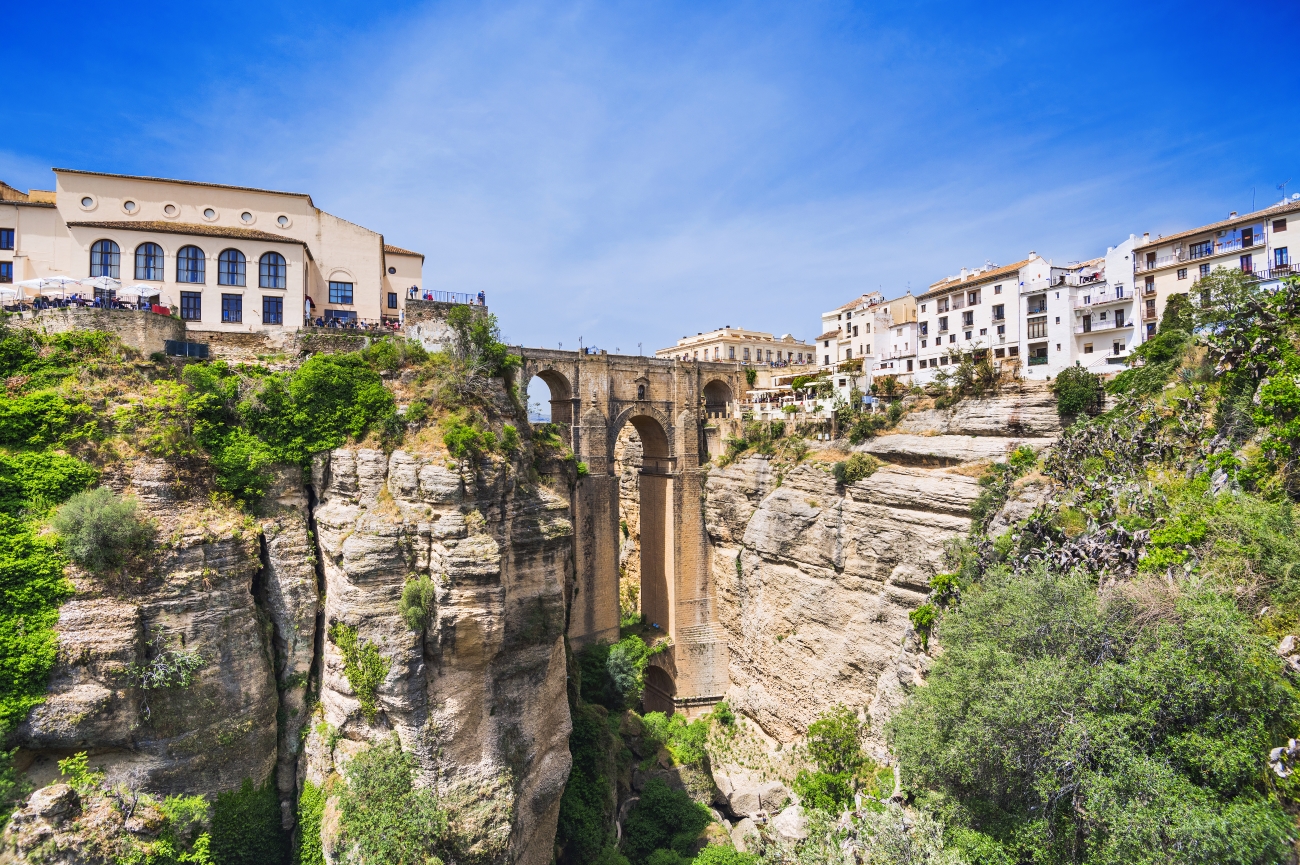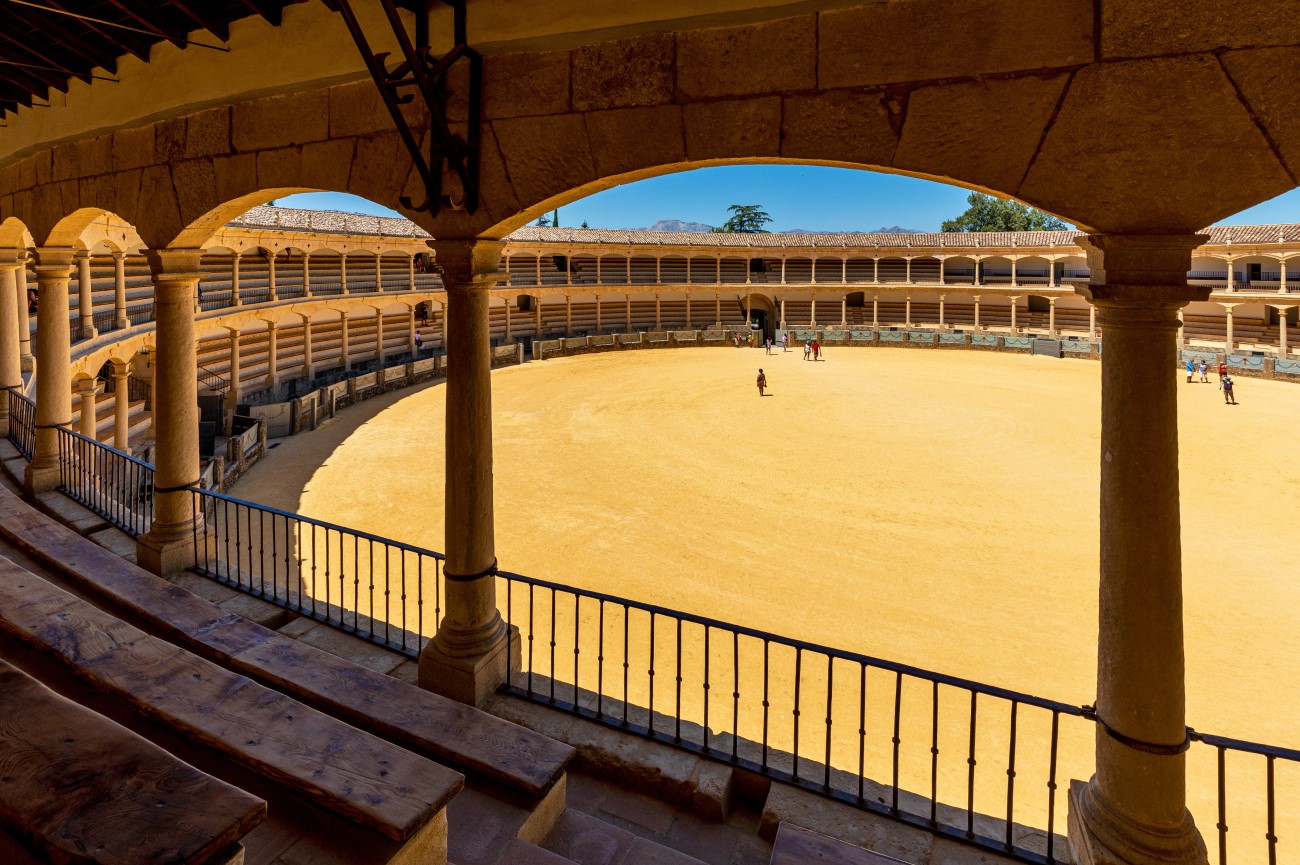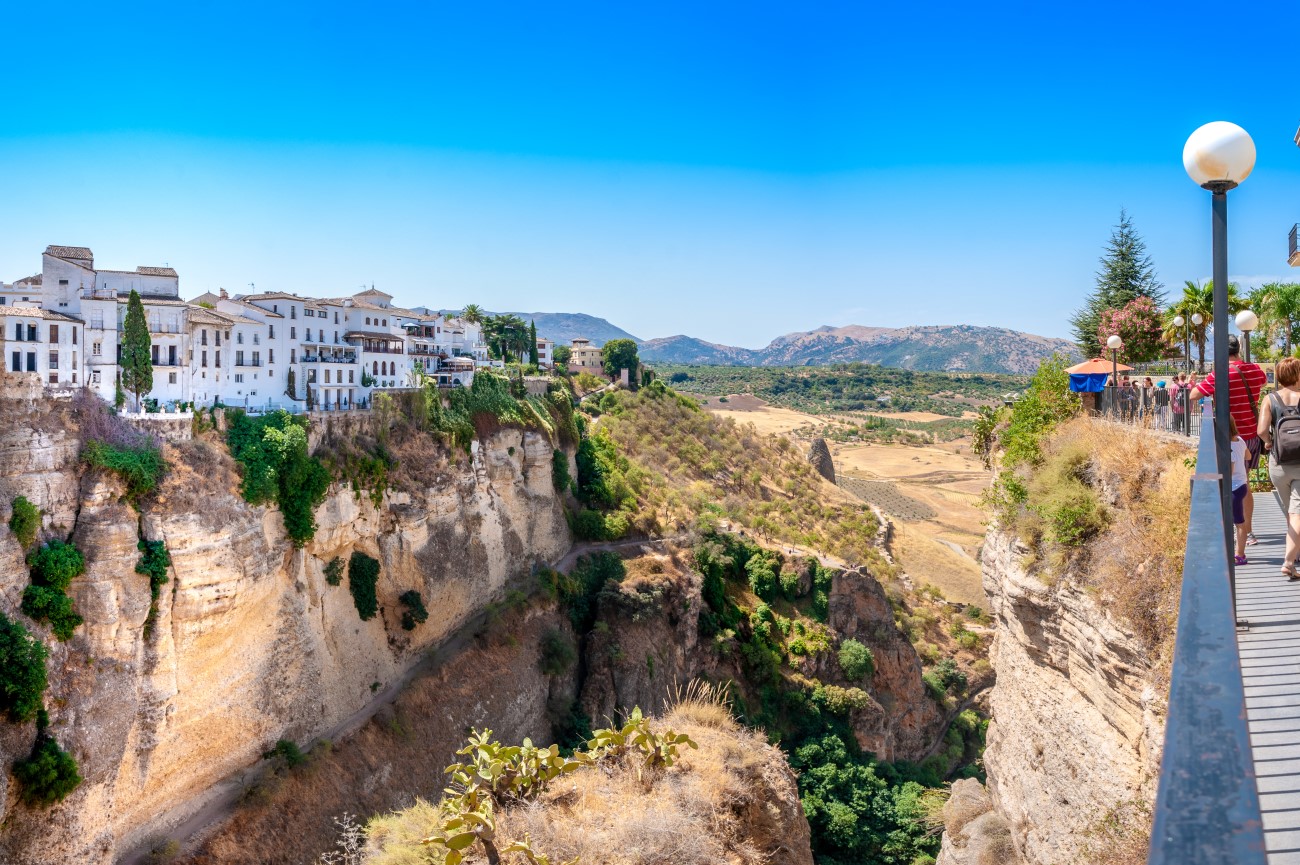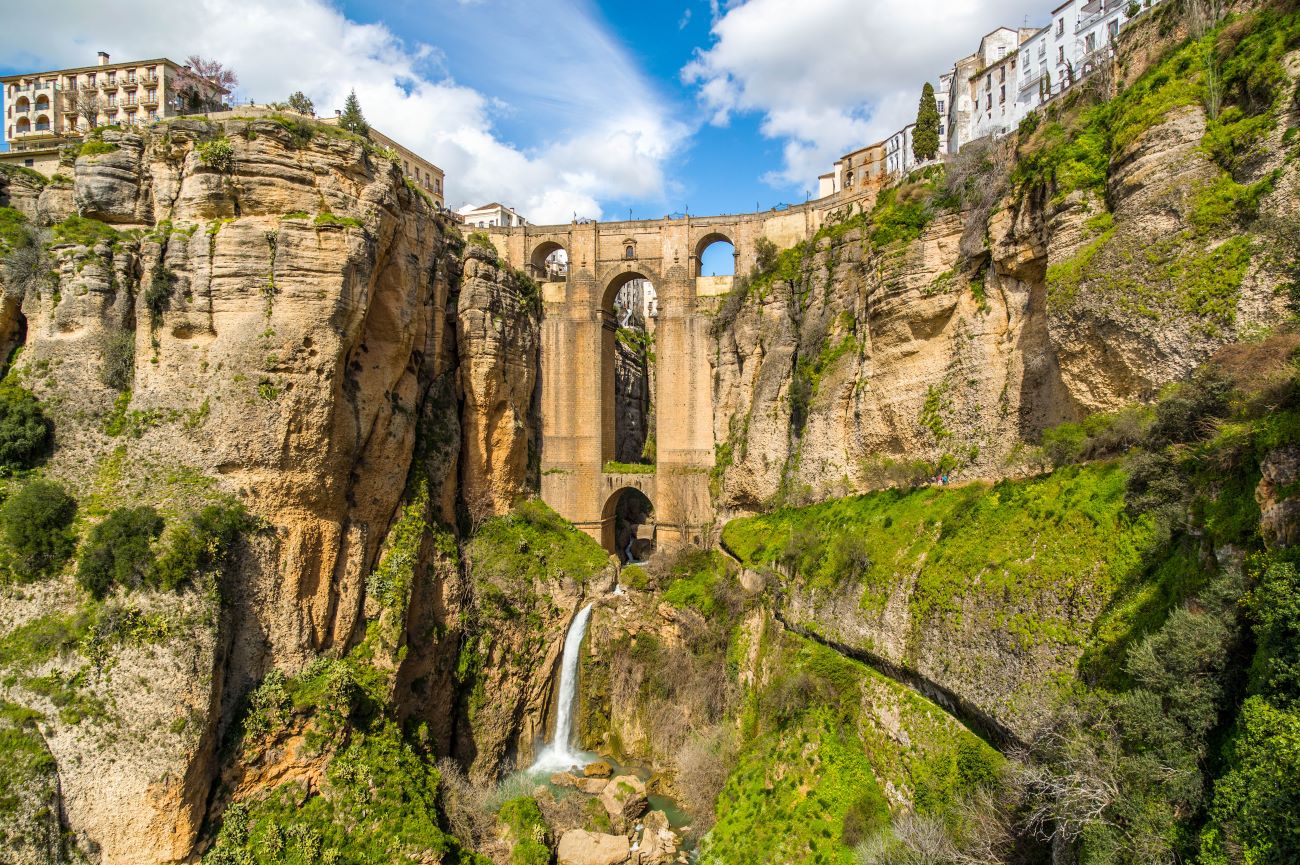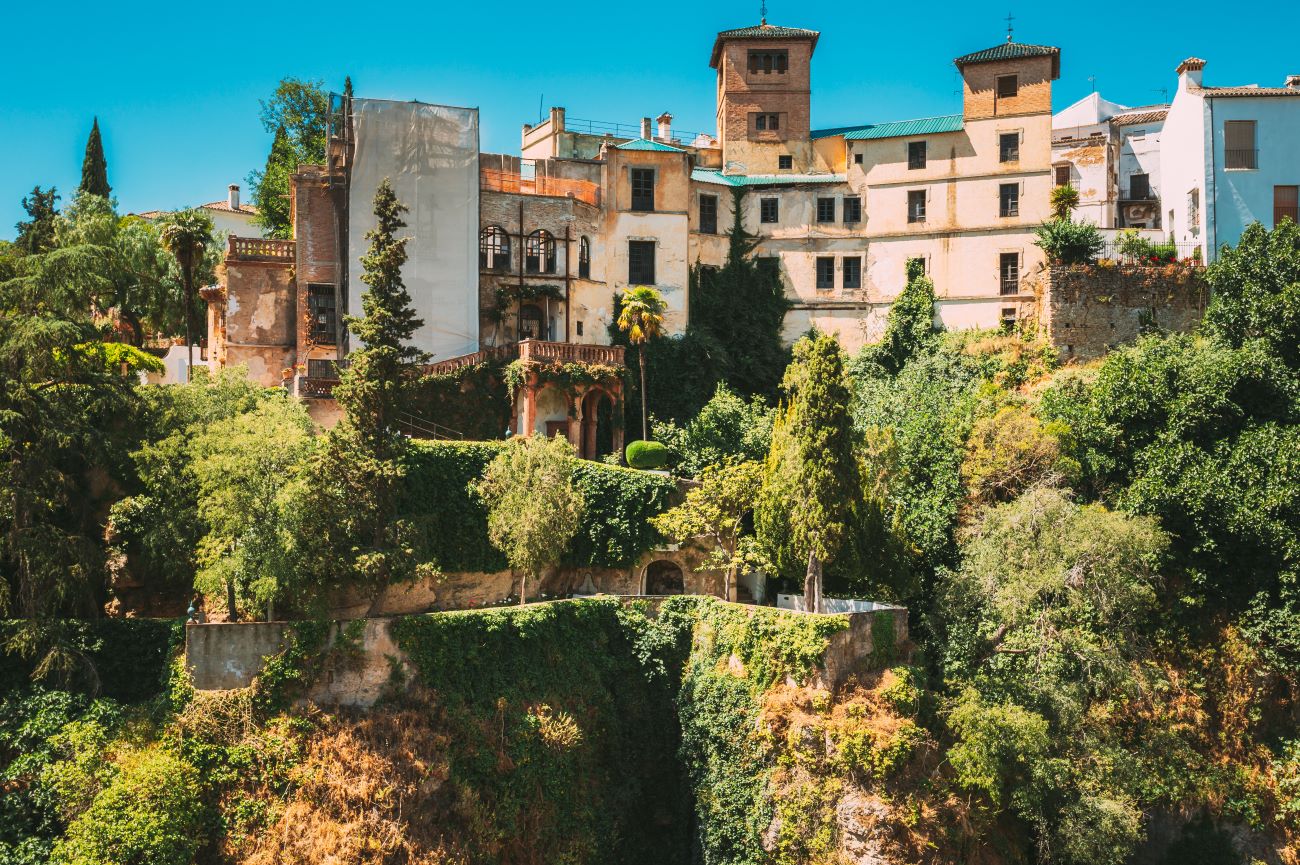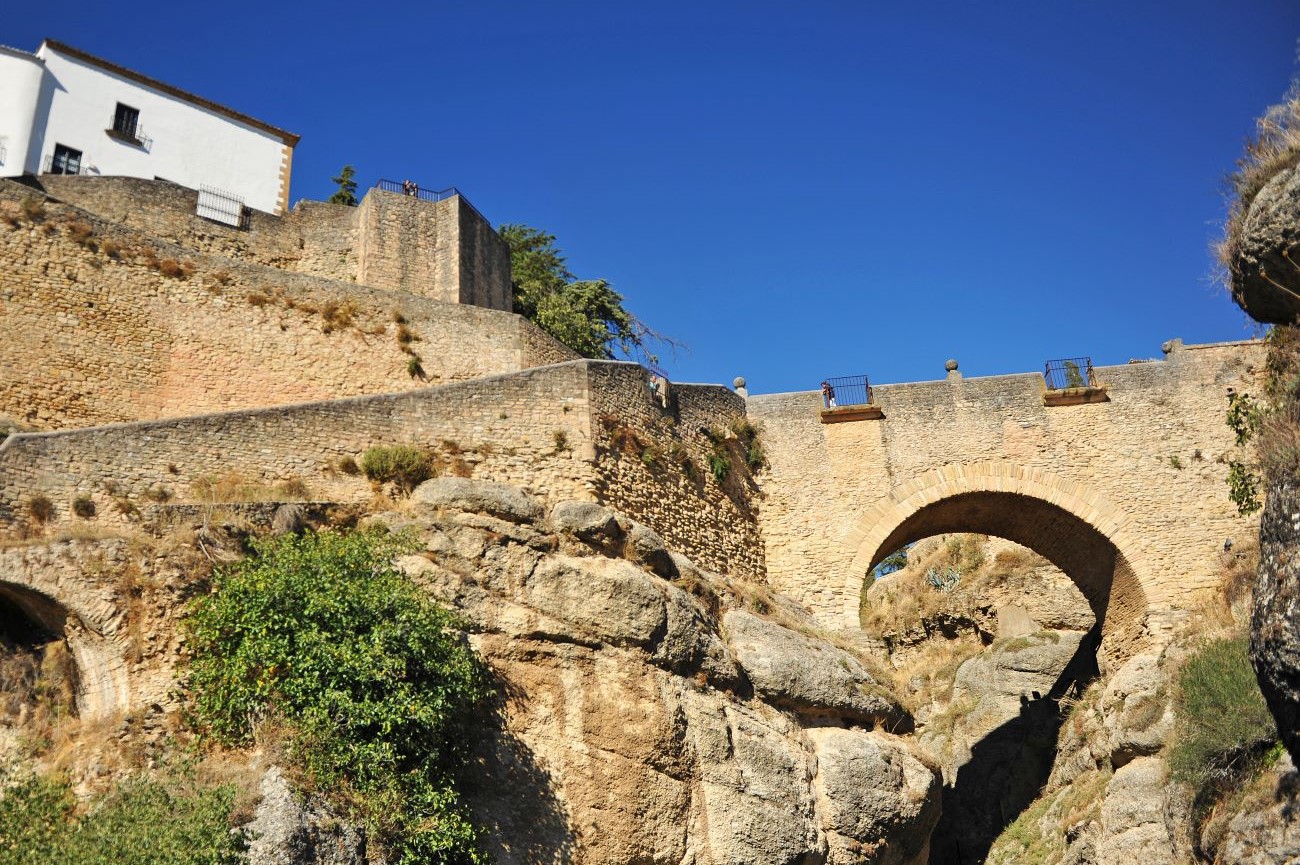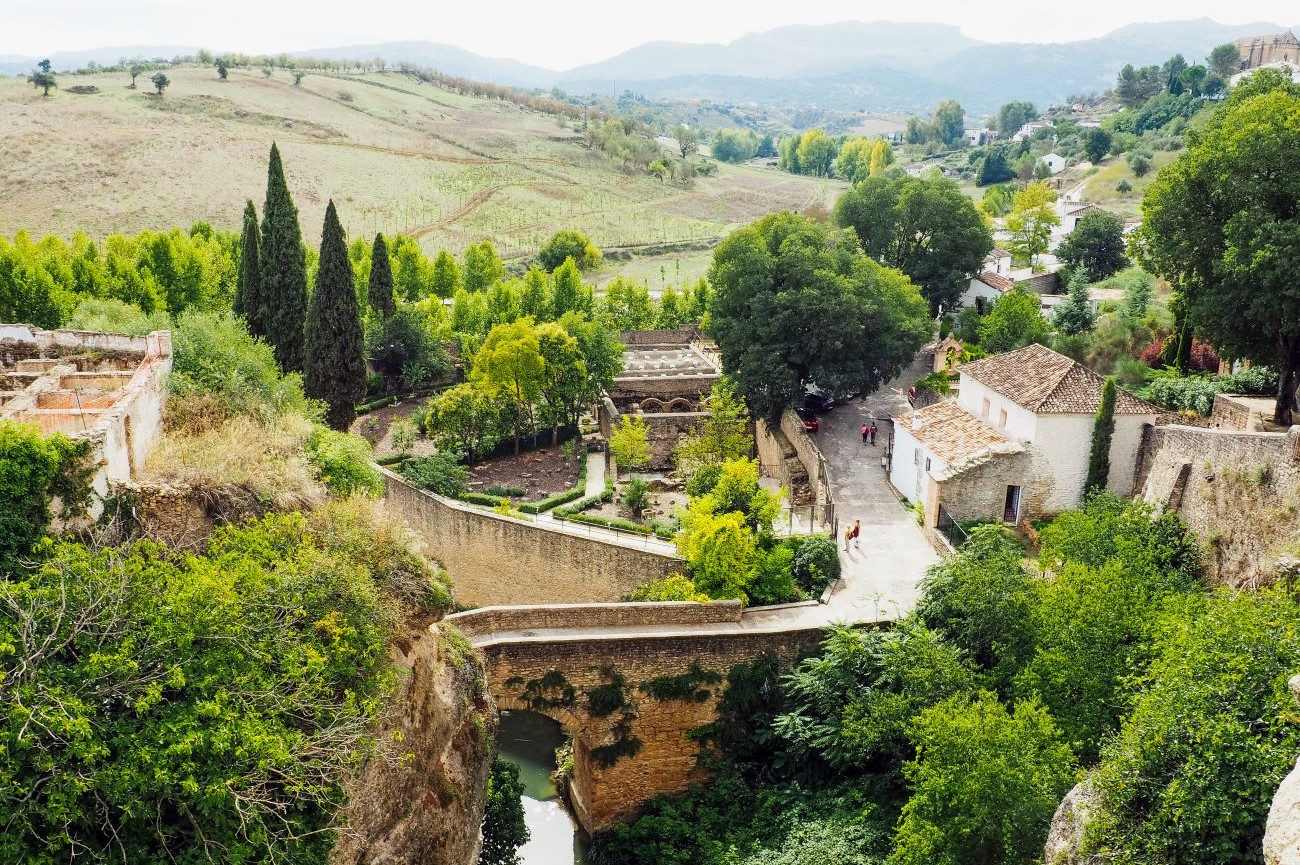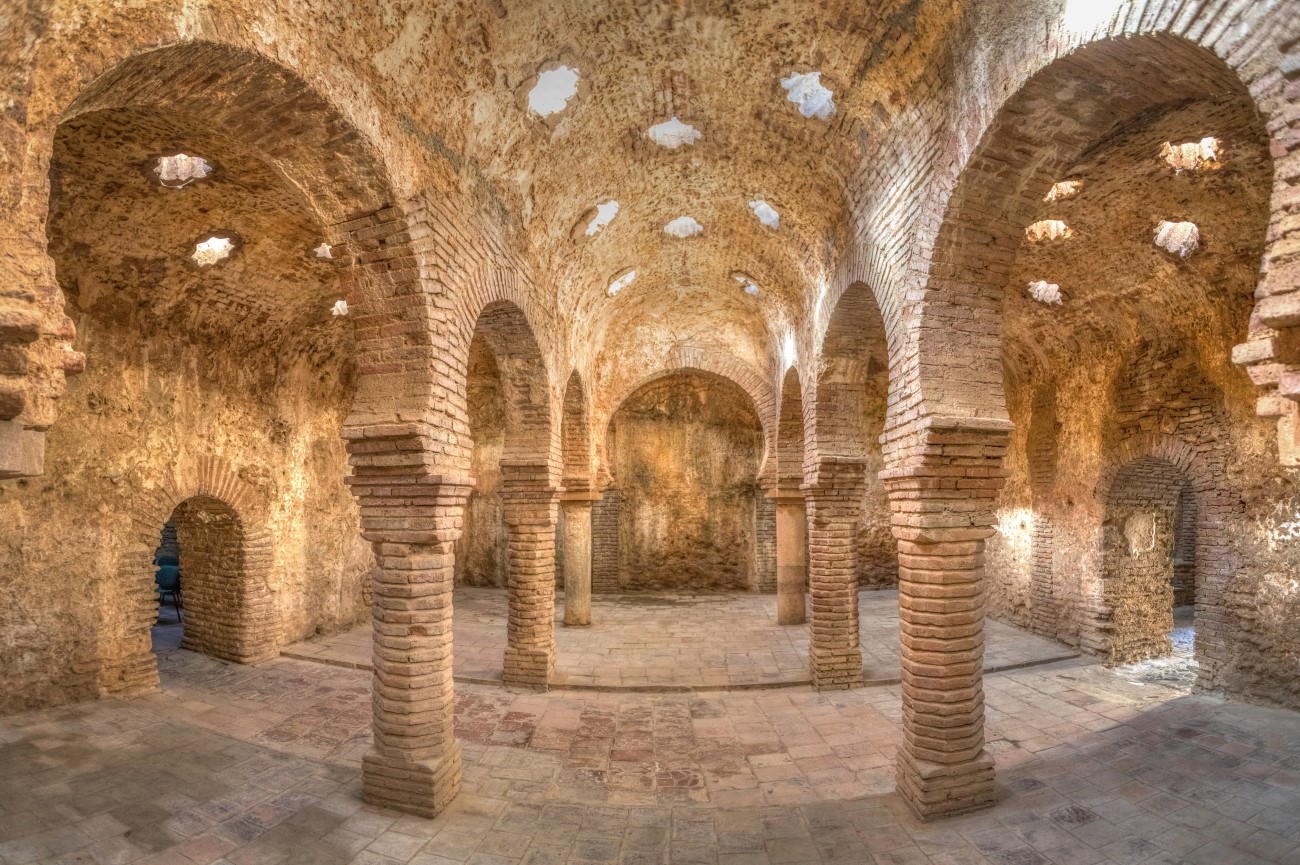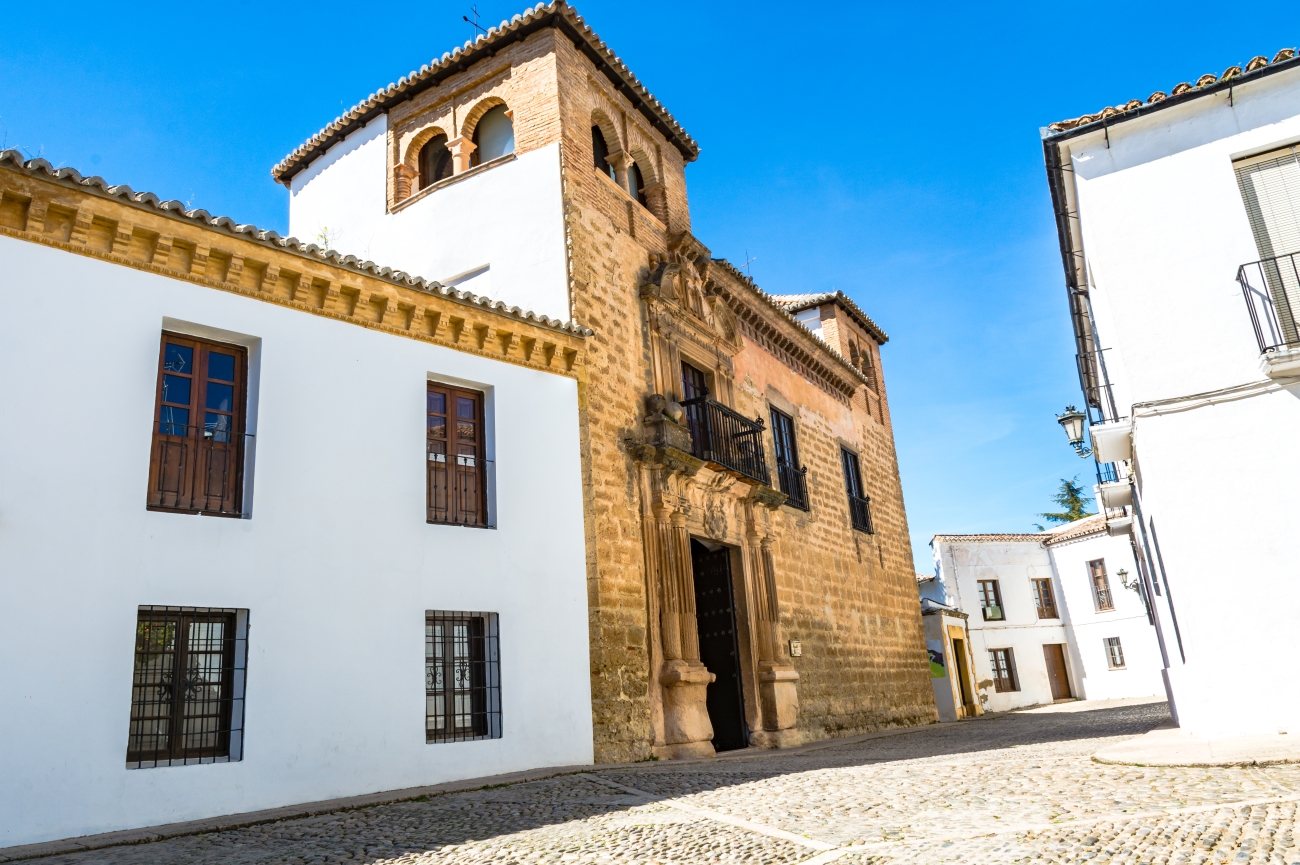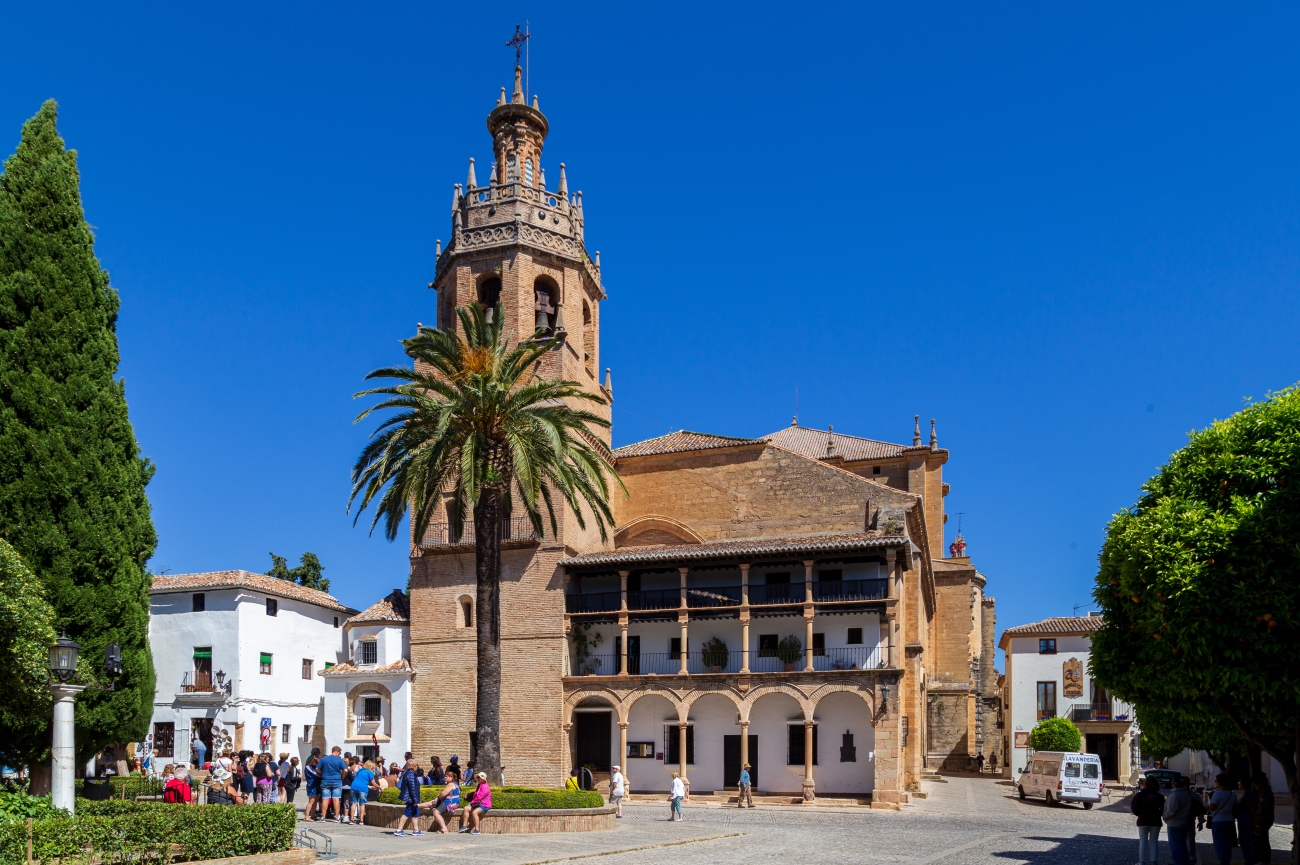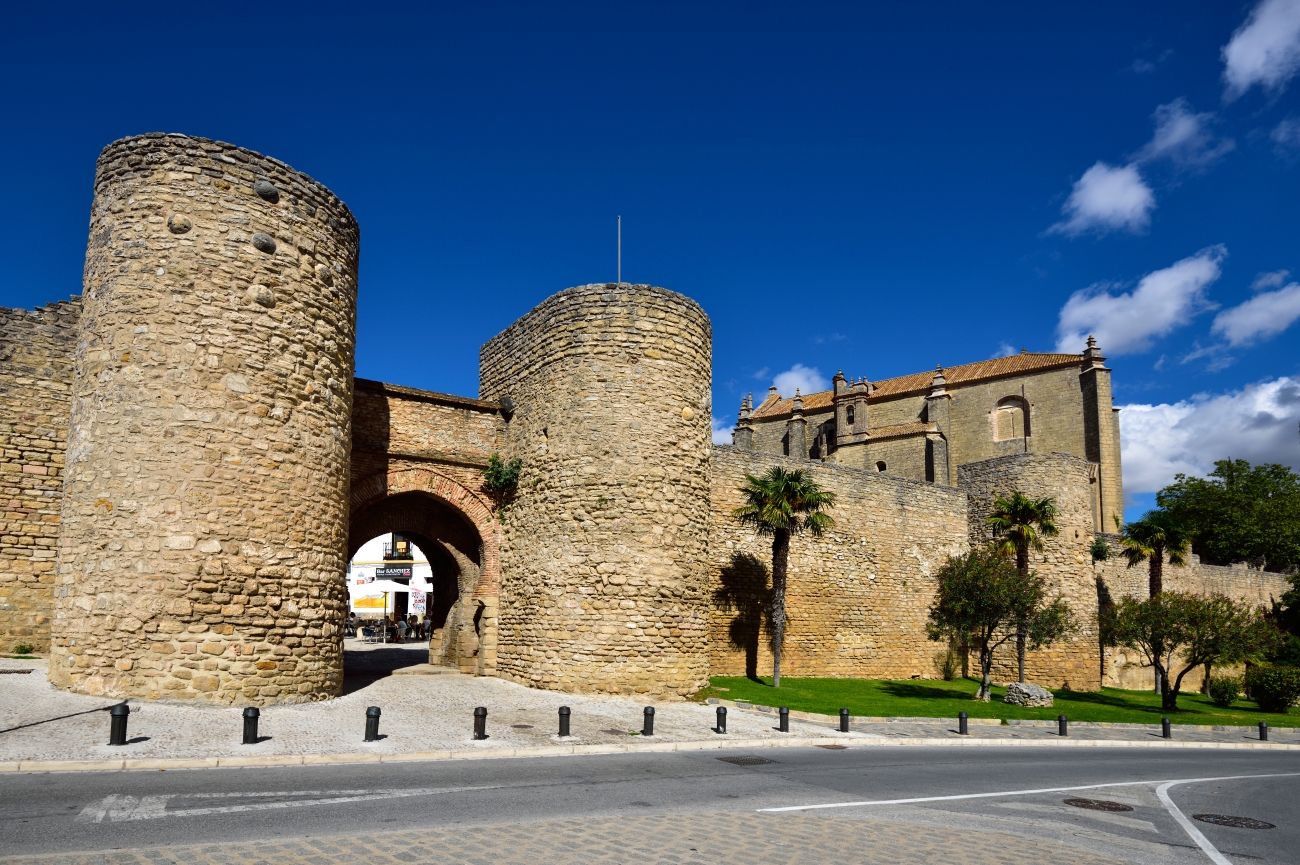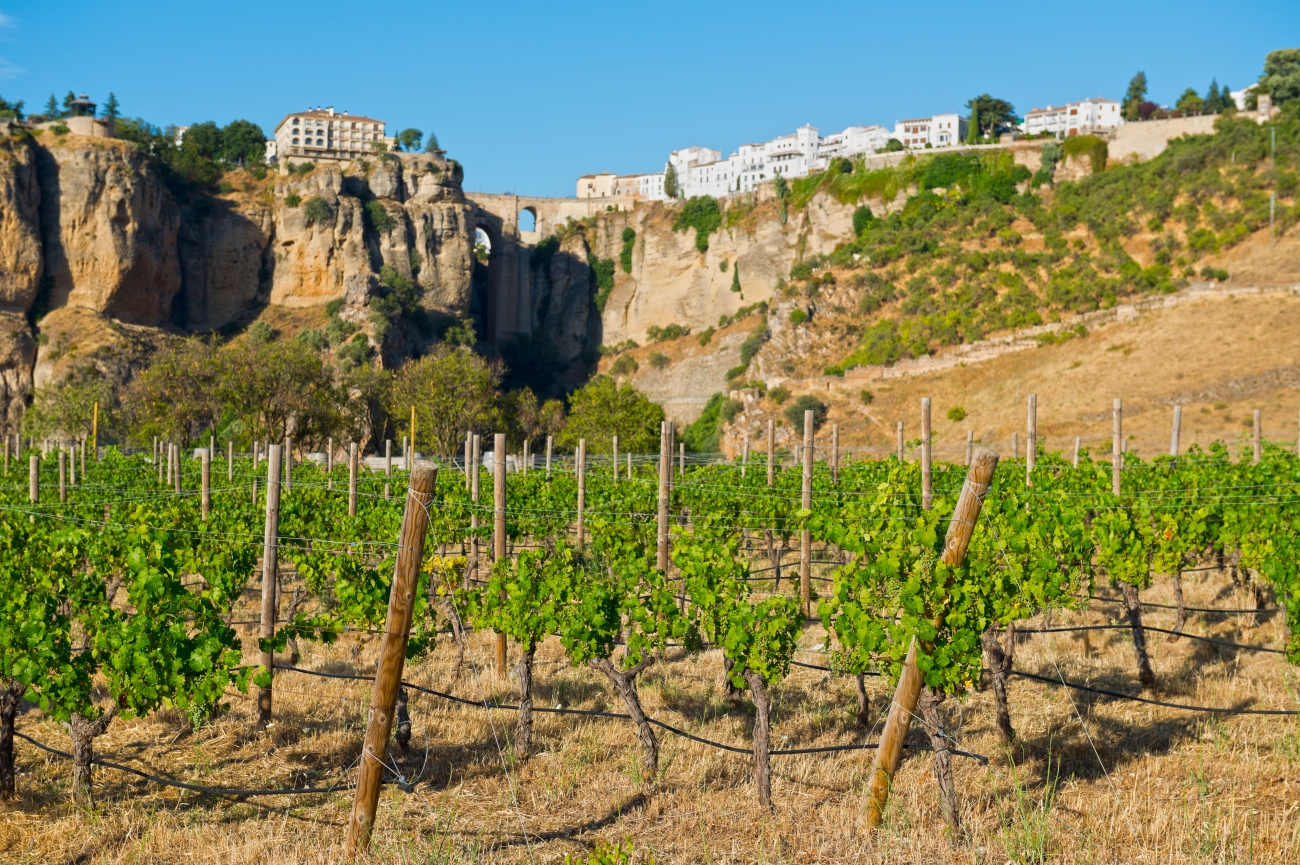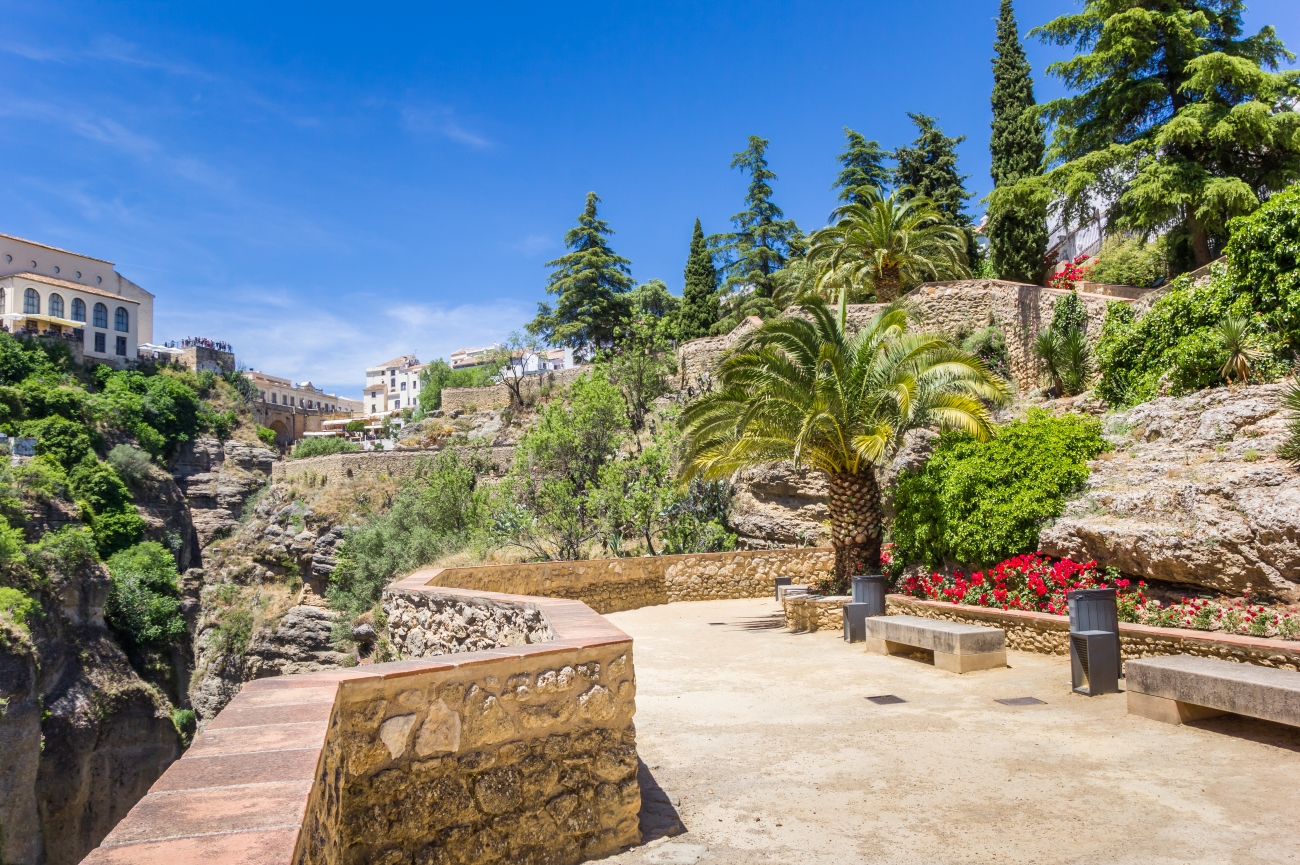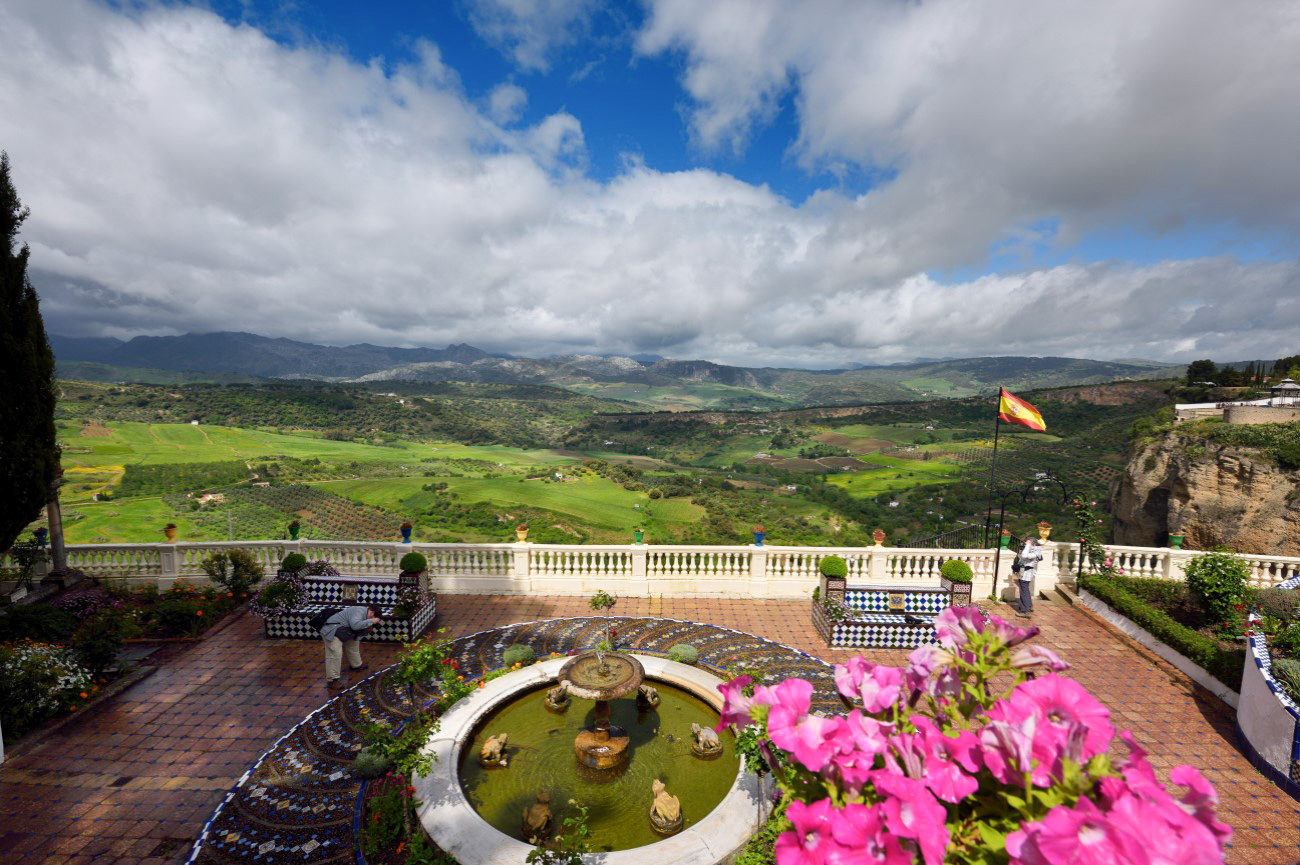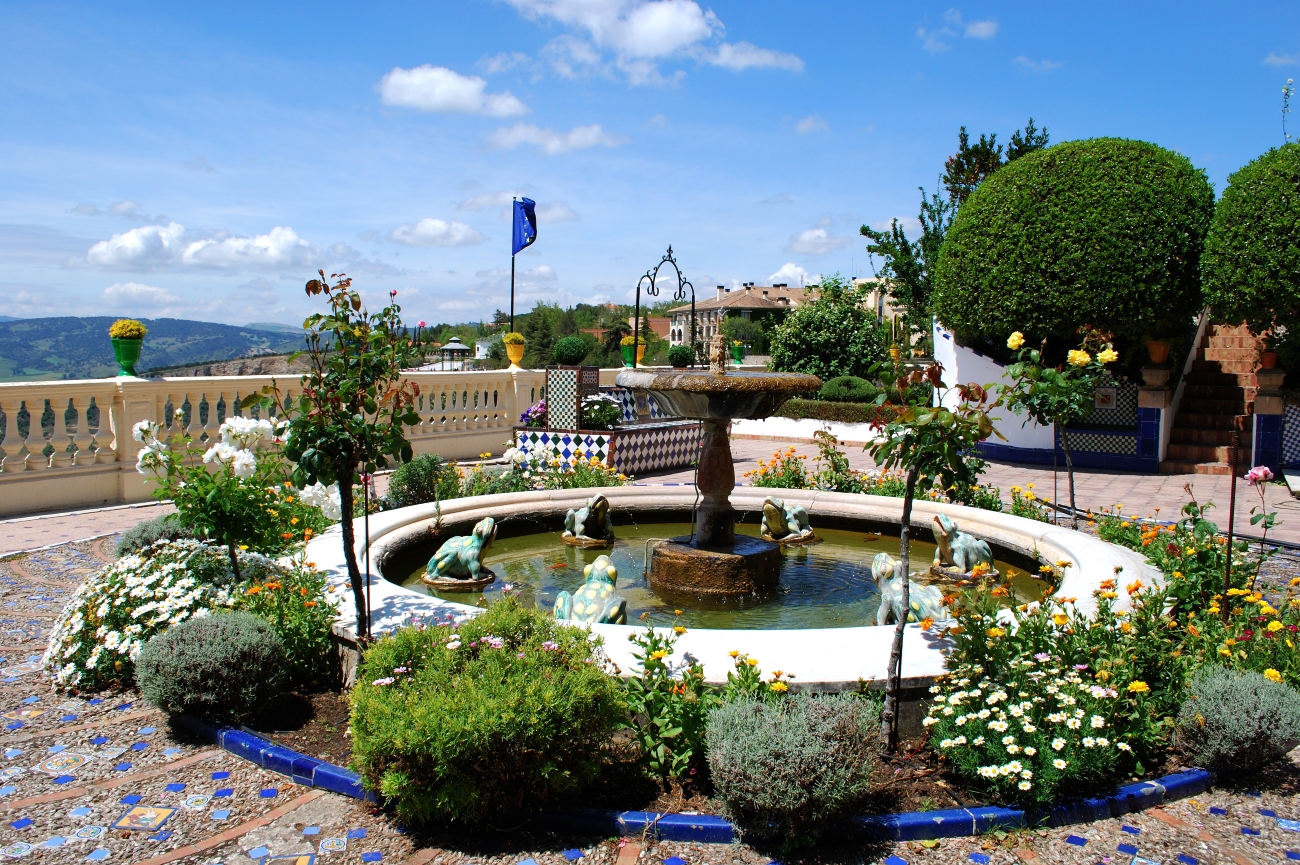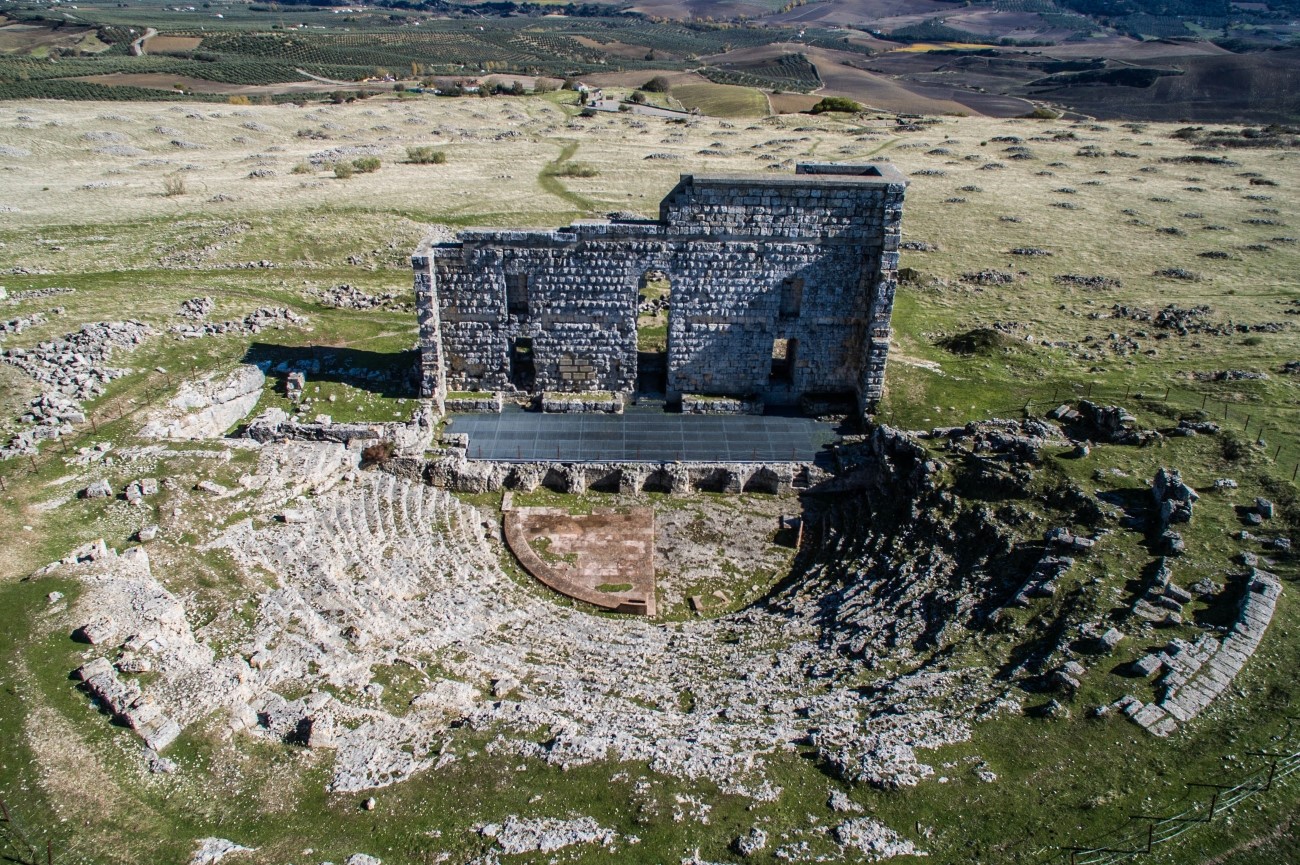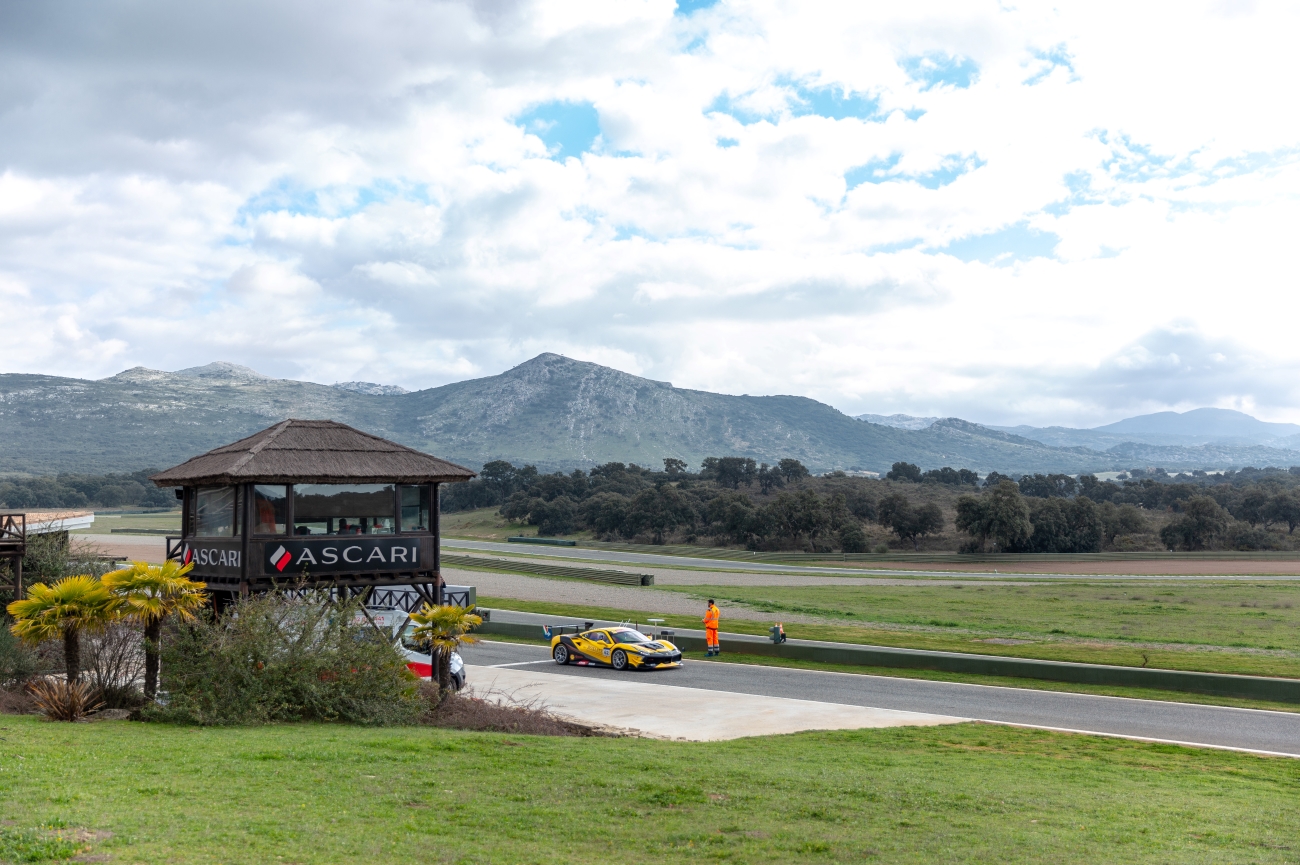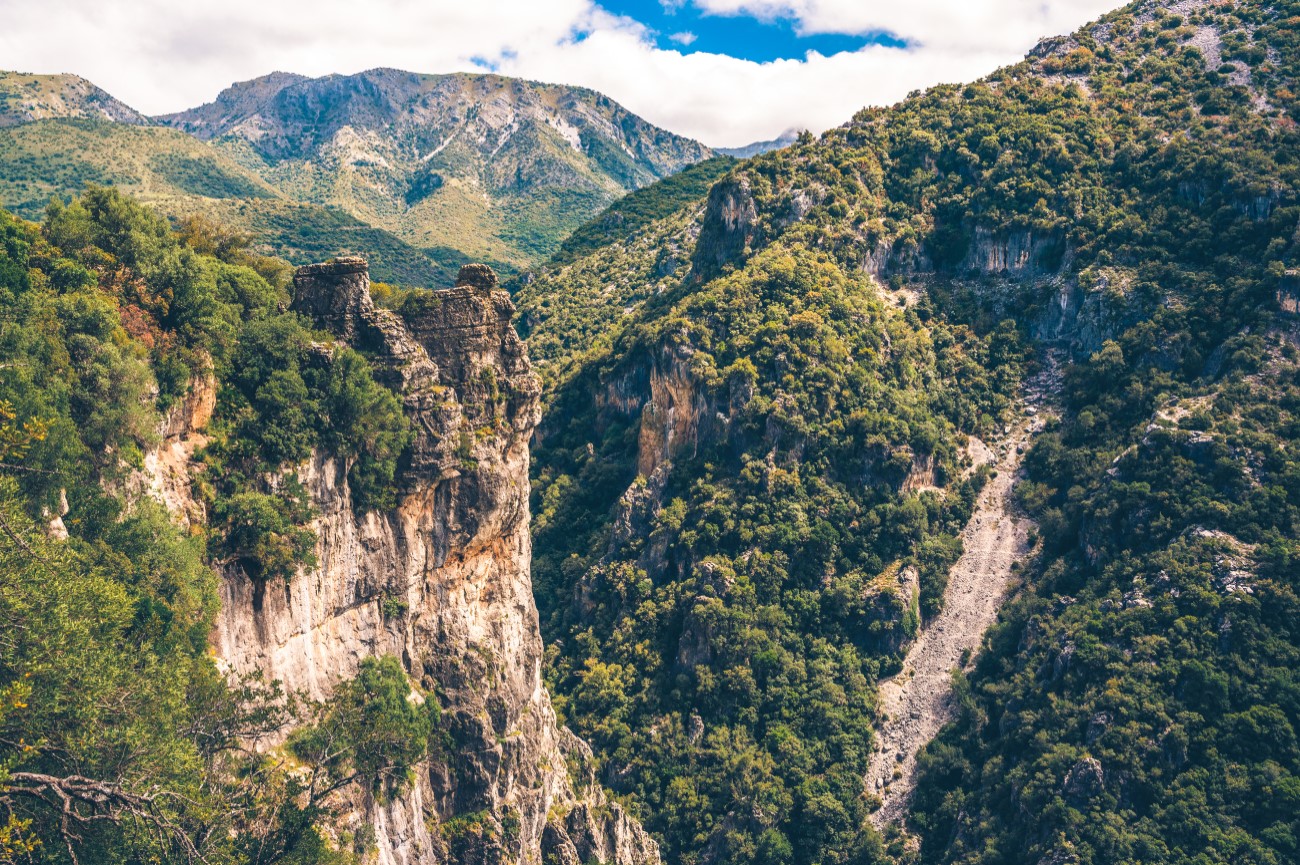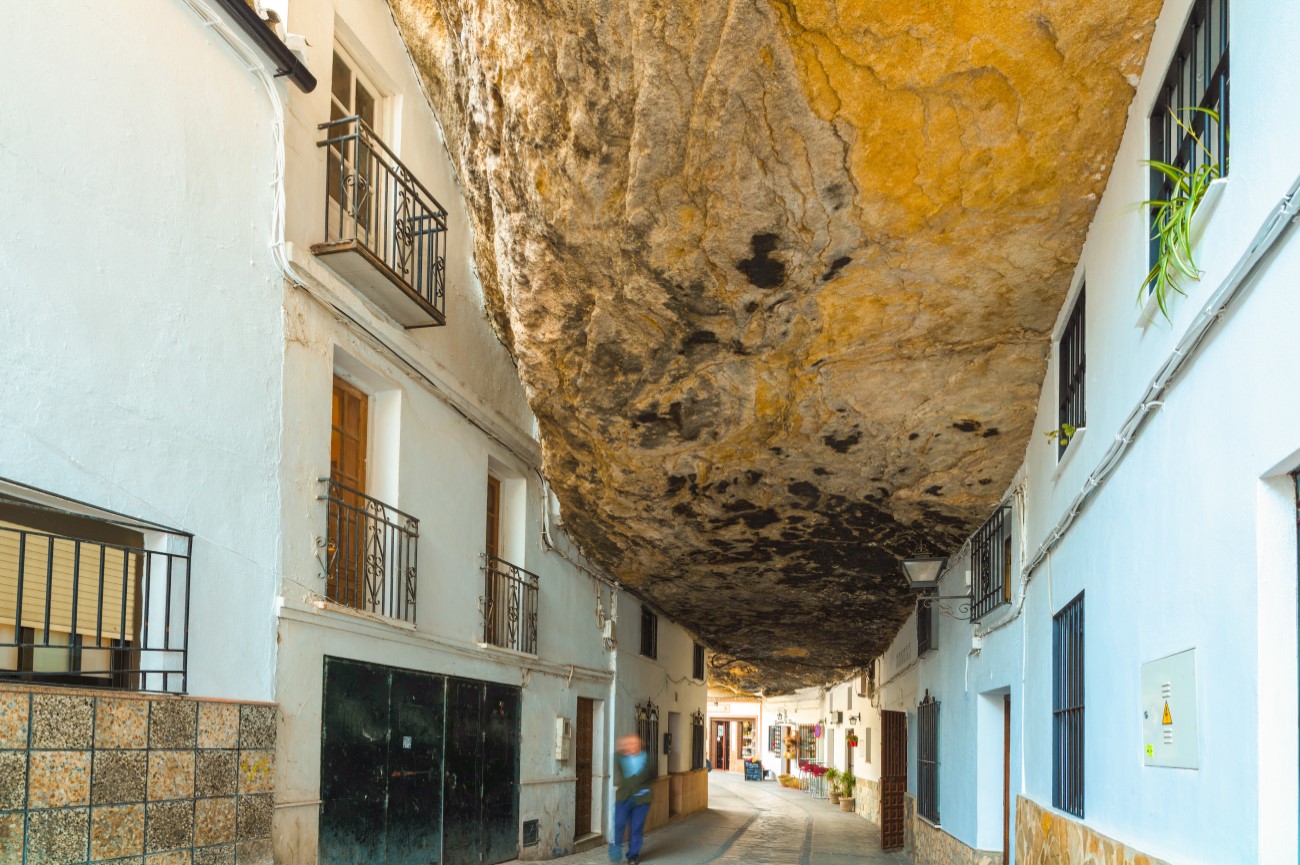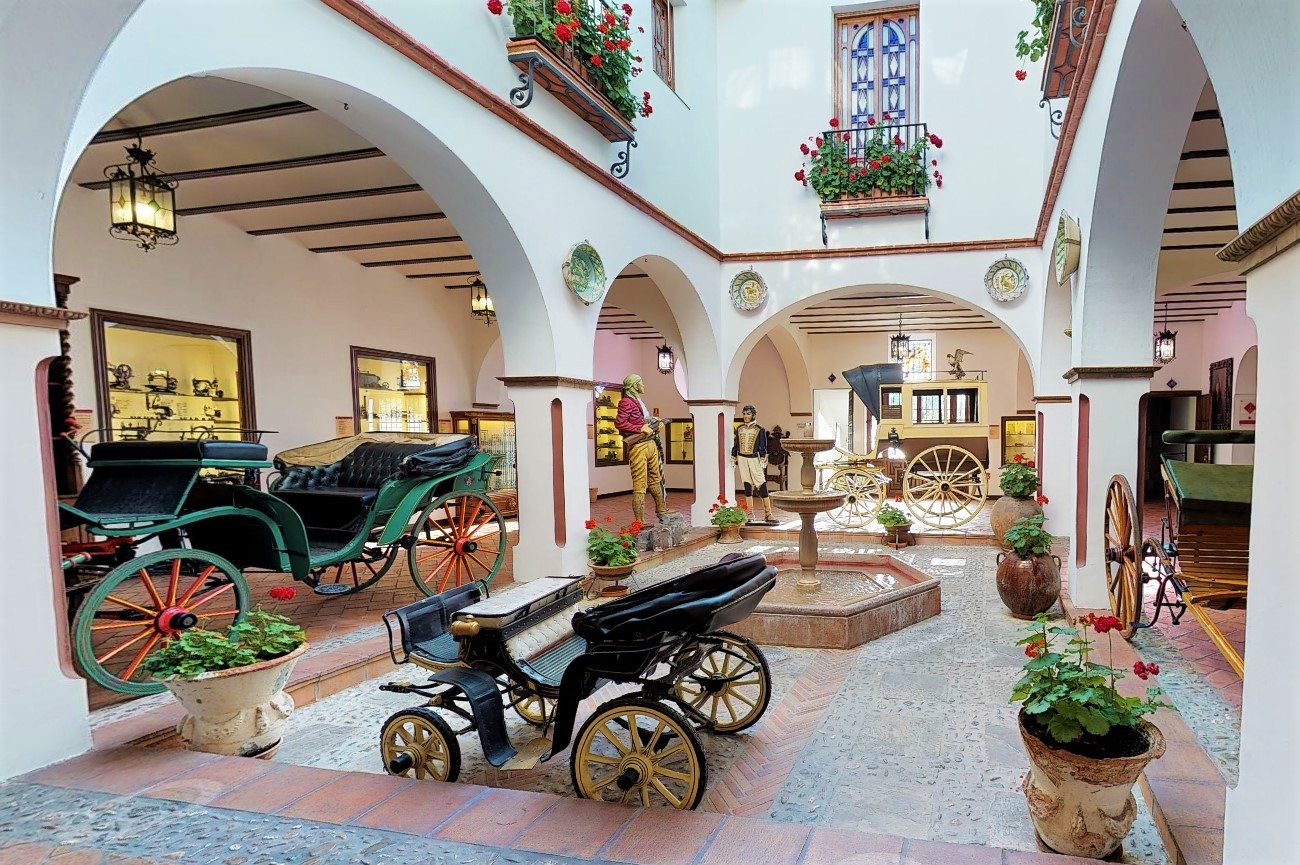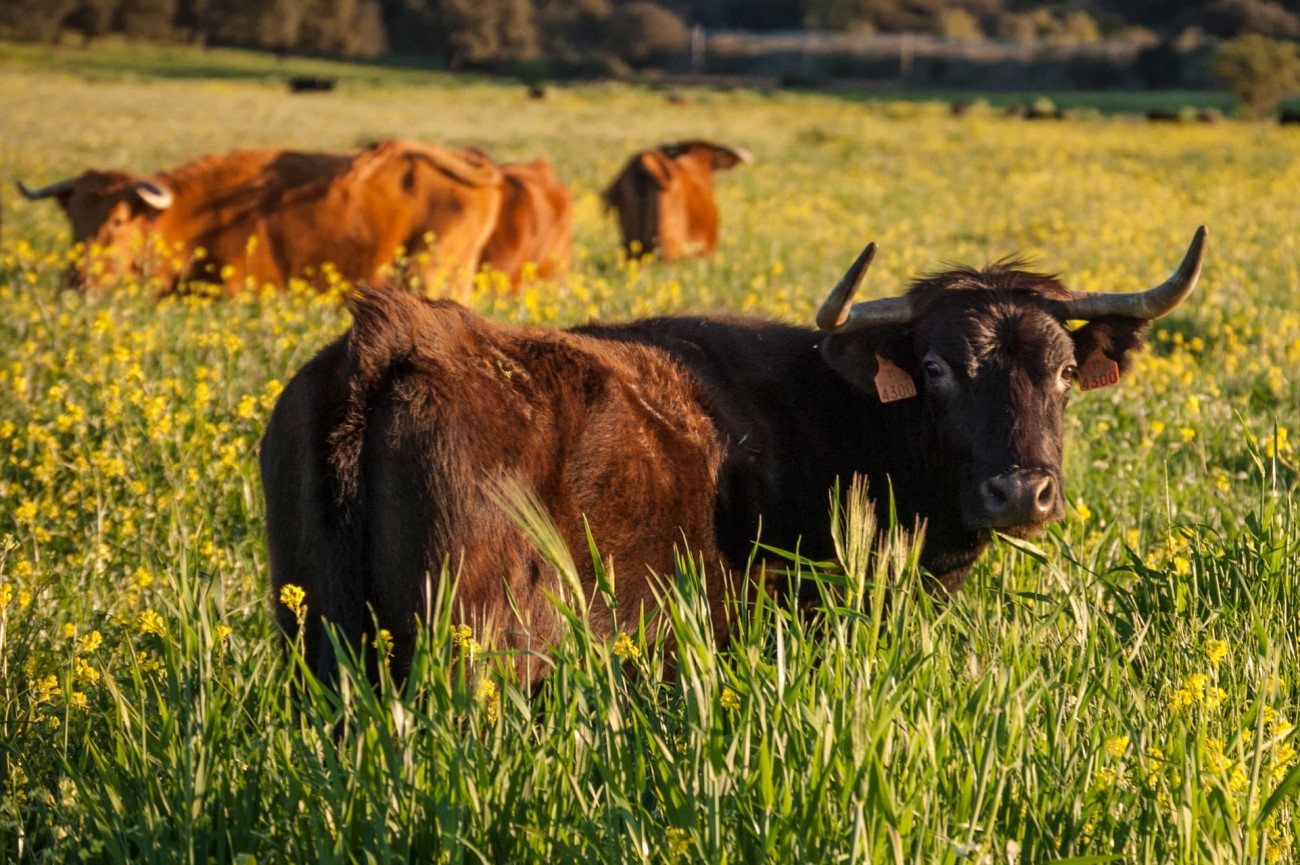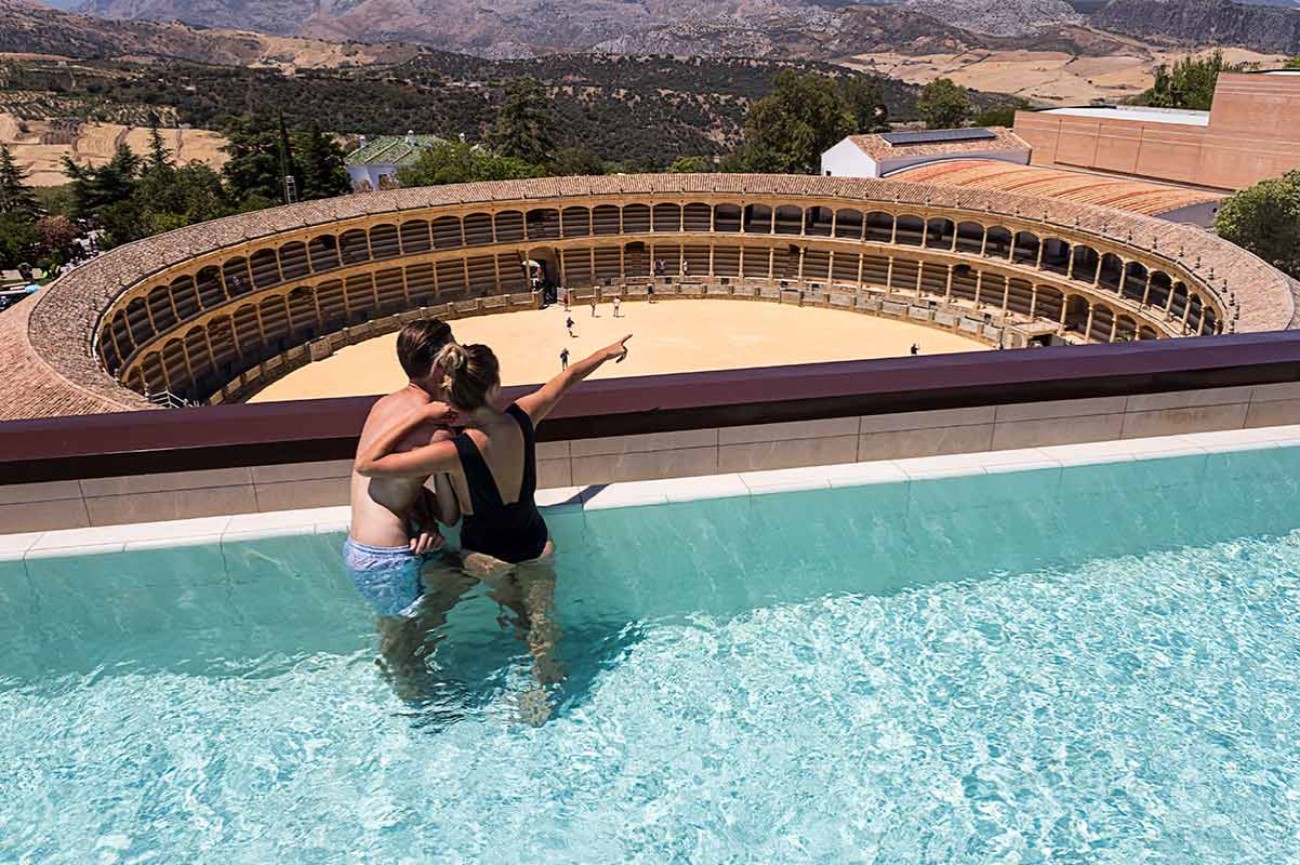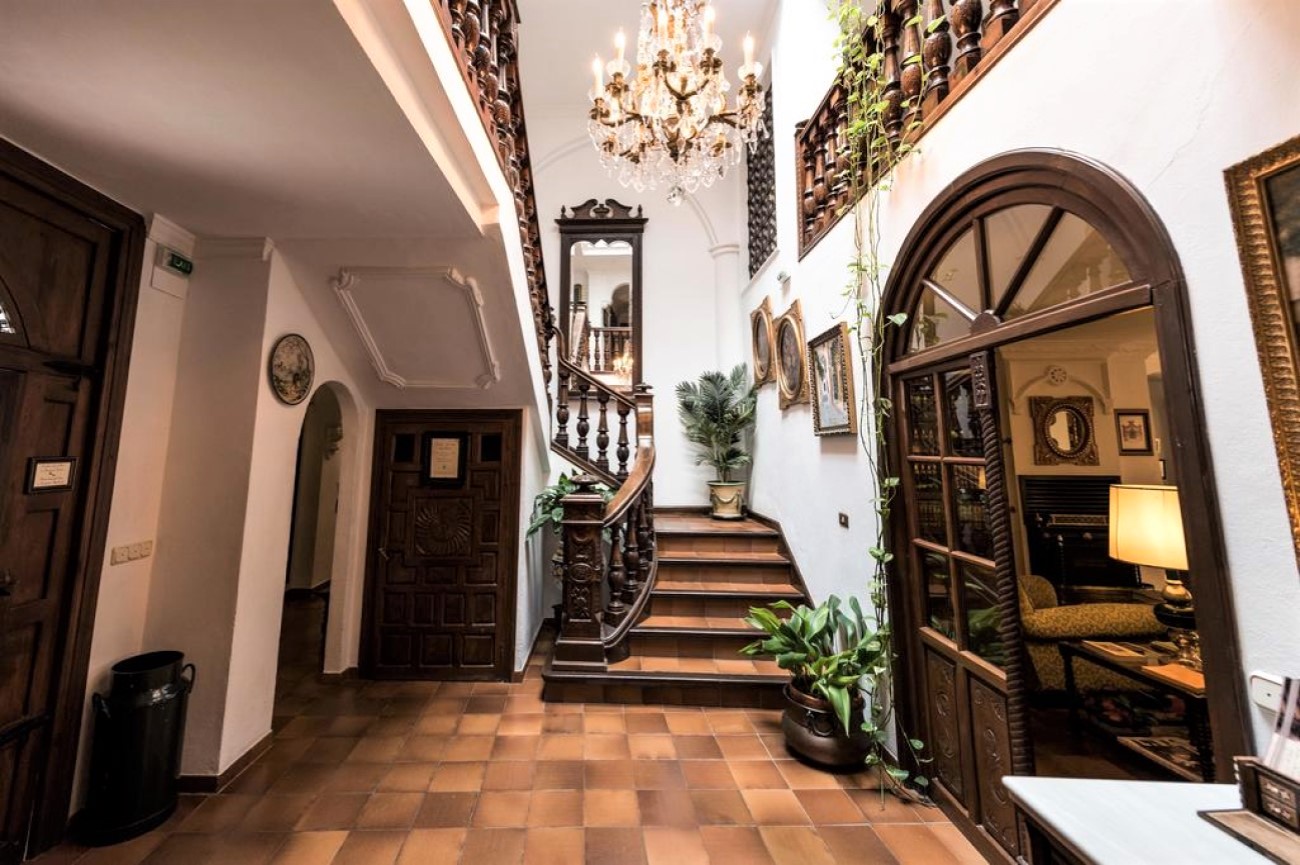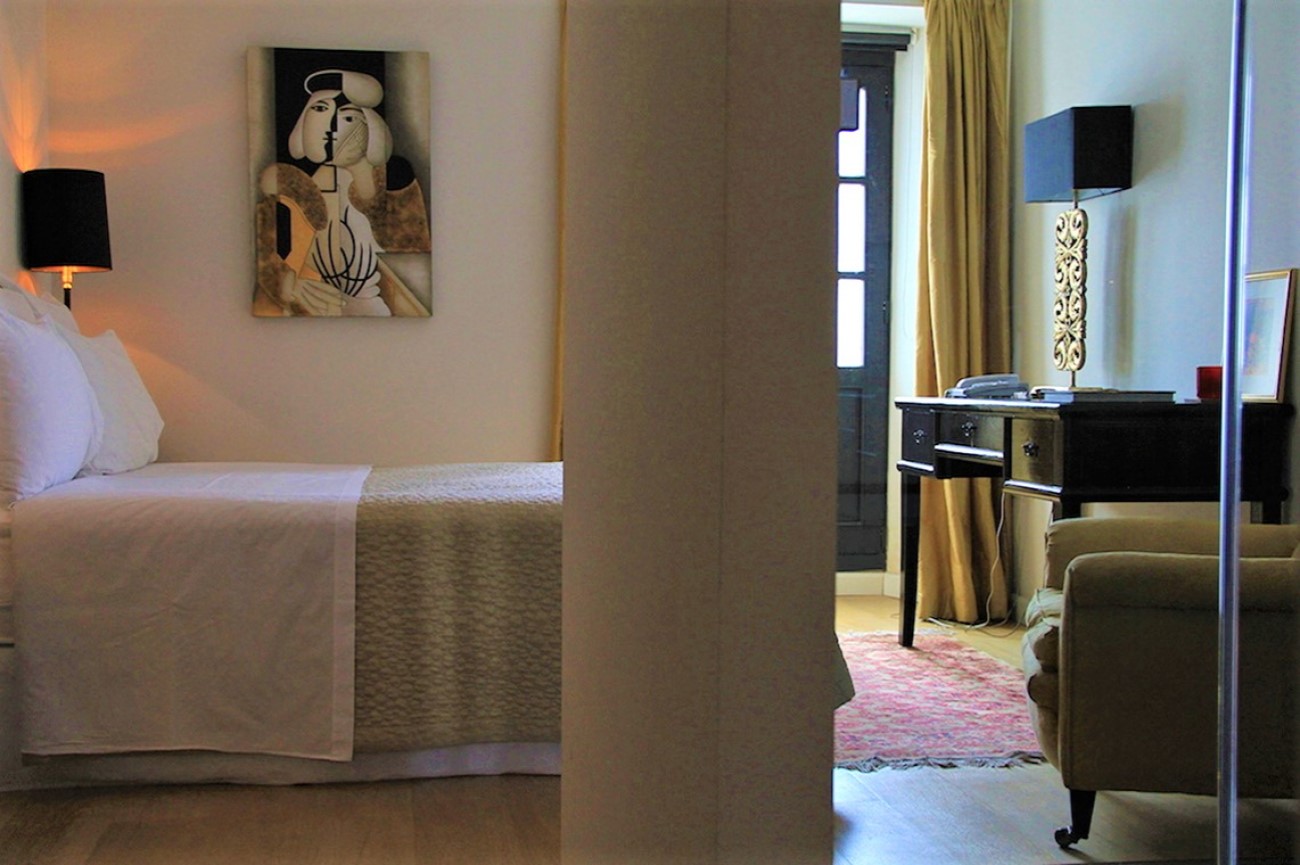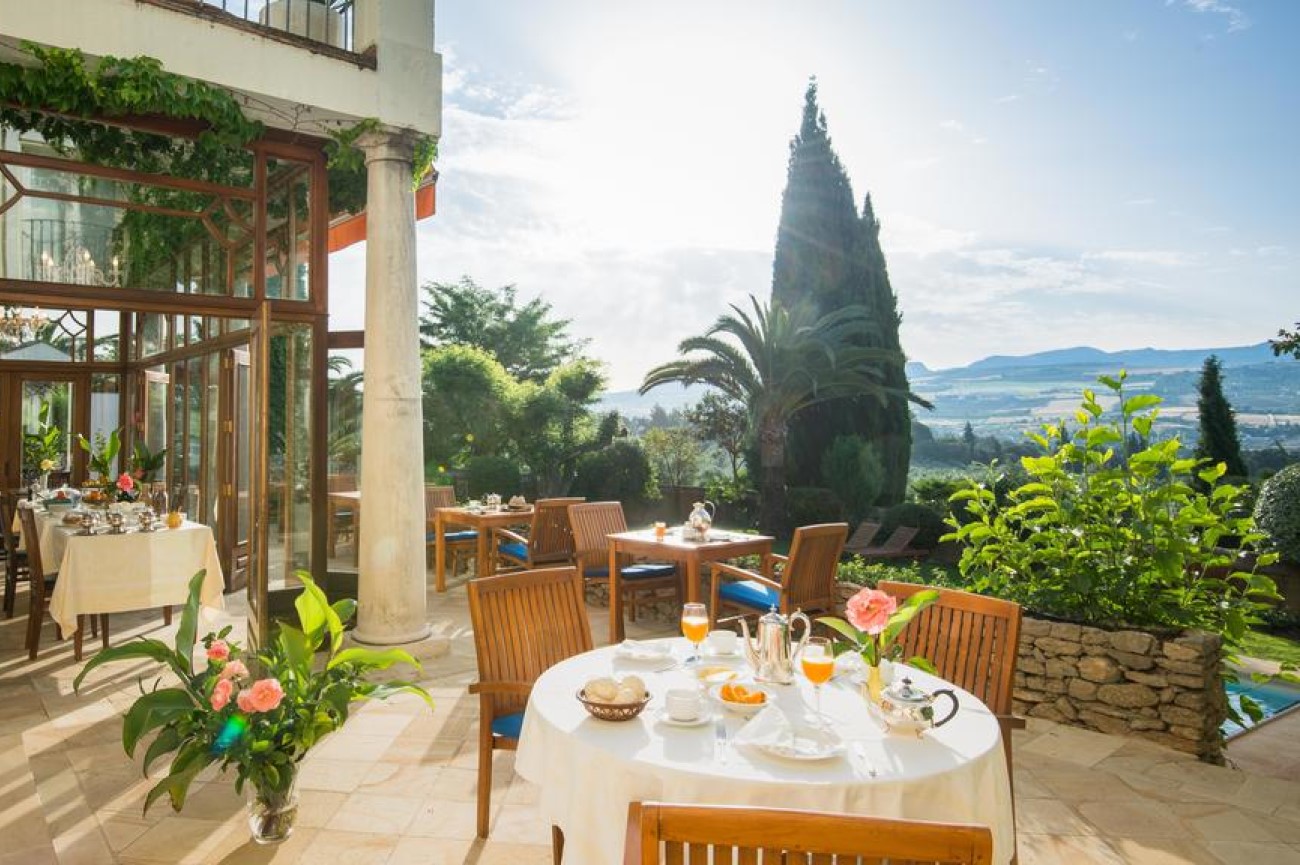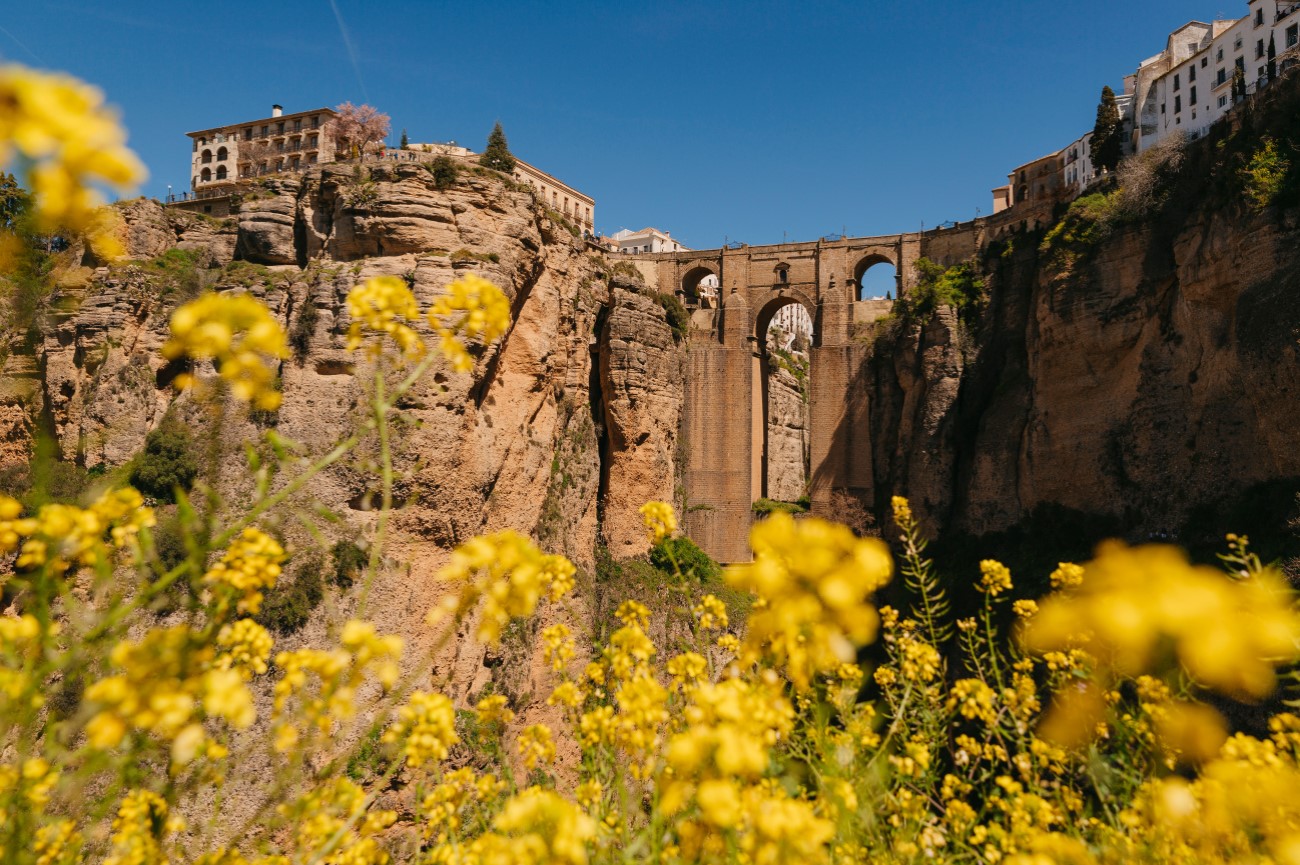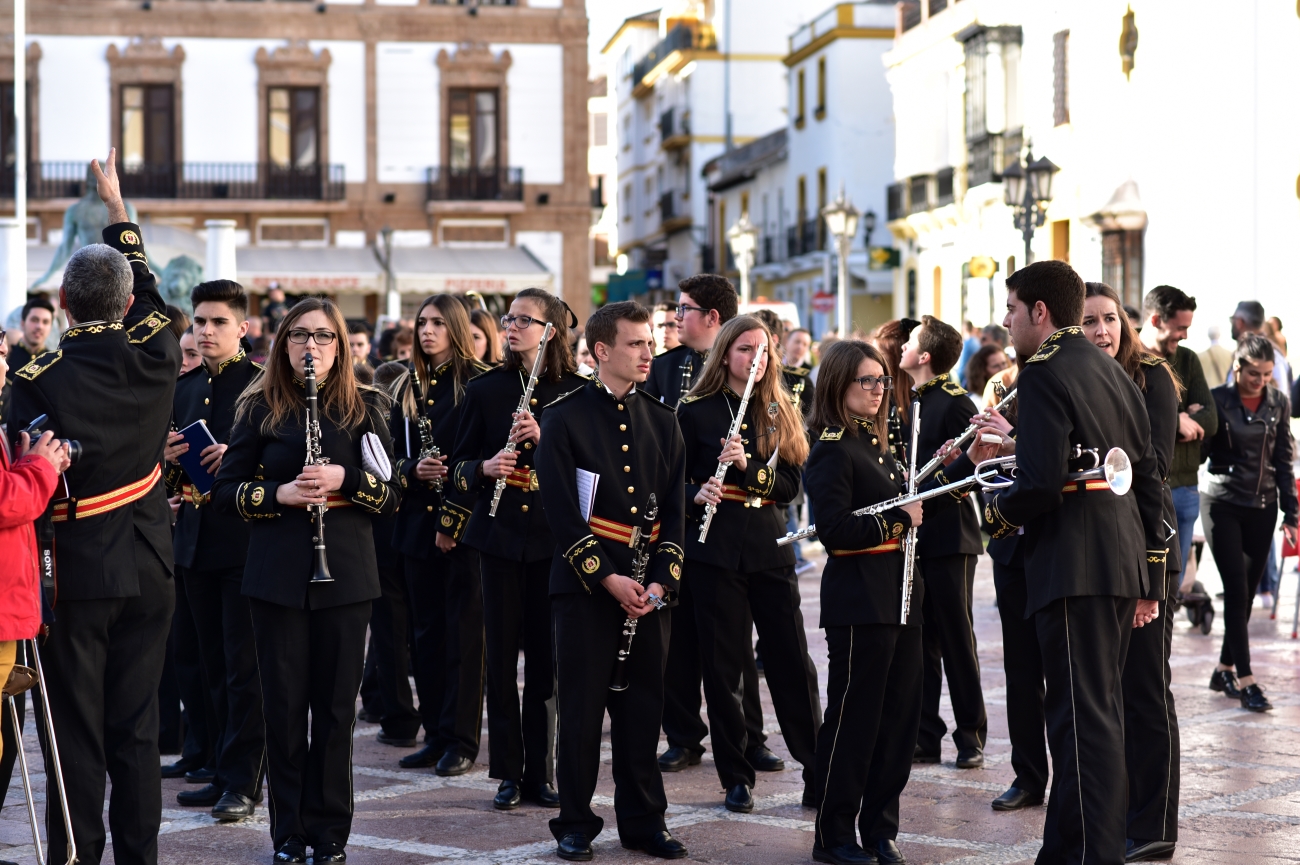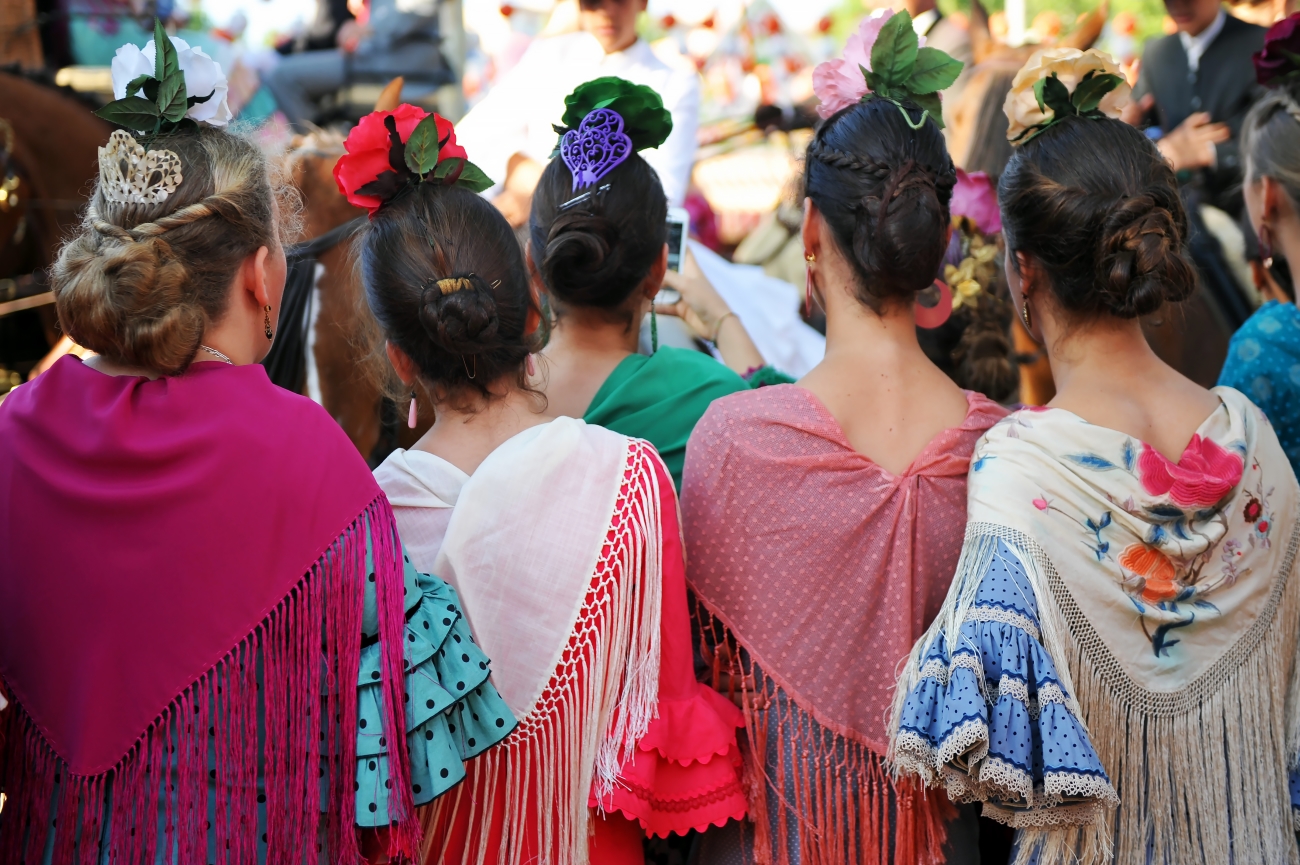Things to do in Ronda, Spain
Set in the Málaga province, Ronda leaves visitors gasping for air with its dramatic scenery. The town sits on the edge of a deep ravine amid mountains and river valleys and is among the most visited places in Andalucia.
Ronda's most striking feature is the Puente Nuevo, an 18th-century bridge that stands above the El Tajo gorge and separates the old and the new town. Another top attraction is the Plaza de Toros, one of the oldest bullrings in Spain. The town's bullfighting scene appealed to artists like Ernest Hemingway and Orson Welles, whose ashes are buried here.
Within the old town, you’ll find traces of the city’s Moorish occupation, with sites like the Arab Baths and the Palacio de Mondragon. Beyond its historical heritage, Ronda is also a wine town, with more than 20 wineries scattered across the region.
If you’re looking for things to do in Ronda, this itinerary includes the best sights in town, as well as places to eat and local festivities you shouldn’t miss.
Morning: Alameda Del Tajo
You'll find most of Ronda's attractions within the old town (La Ciudad), but it's worth taking some time to explore the new town (El Mercadillo) too. Start with a visit to the Alameda del Tajo, a public park established in the 19th century. Walk around the tree-lined promenades and slowly make your way to the gazebo at the edge of a cliff. You can not help stopping here and admire the magnificent views of the Tajo gorge below. It's one of the many lookout points you'll encounter on your city tour.
Plaza De Toros
A few steps away from the park is the Plaza de Toros, the city's bullring. Completed in 1785, it's among the oldest bullrings in Spain. It was designed by José Martín de Aldehuela, the same architect who created the infamous Puente Nuevo. Ronda is considered the birthplace of modern-day bullfighting. Back in the 18th century, local matador Francisco Romero introduced new rules to the sport which remain today, including the use of the iconic red cape. These days, the arena is mostly busy in September during the city's annual fair. For the rest of the year, visitors can join a guided tour of the space or access the museum to learn more about this Andalusian tradition.
Paseo Ernest Hemingway
From Plaza de Toros, continue walking until you reach the Paseo de Ernest Hemingway. This promenade takes its name from the American author Hemingway, who spent a bit of time in Ronda. He was a fan of bullfighting, and that inspired him to write books like The Sun Also Rises and The Dangerous Summer. The paseo runs along the El Tajo gorge offering incredible views of the surrounding mountains.
Puente Nuevo
Separating Ronda's new and old town is the Puente Nuevo, the most famous landmark in the city. The bridge sits over a 400-foot gorge shaped by the Guadalevín river and has been here since 1793. There are two more bridges in Ronda, but this is the newest one, hence the name Nuevo. Whichever way you look, there are spectacular views to capture. To see the bridge from the bottom of the gorge, follow the Calle Tenorio to Plaza de Maria Auxiliadora, where you'll find steps to an observation deck. If you have time, you can continue down the road to another viewpoint on the Carretera de los Molinos. In Spring, this path is full of flowers. Once you've taken your share of photos, head back to the town center.
La Casa Del Rey Moro
In the old town, less than five minutes away from the bridge you'll find the Casa del Rey Moro. The palace has a misleading name as it was built in the 18th century, way after the city's Moorish occupation. While the building is closed to visitors, you can still wander through the landscaped gardens overlooking the El Tajo gorge. A steep staircase leads the way from the gardens to La Mina, an old water mine connected to the river. This last feature is the only thing that actually dates back to the Muslim times. At that time, La Mina was the only water source in the city and slaves were chained to the steps to pass water up to the town.
Ronda Tour Map (Morning)
Afternoon: Puente Viejo And Puente Romano
Puente Nuevo might get all the fame, but there are two other bridges worth capturing in Ronda: Puente Viejo and Puente Romano. The Puente Viejo dates back to the 16th century, and before the construction of the Puente Nuevo, it was the only link between the new and the old town. Today it's only open to pedestrians. Then there's Puente Romano.
Despite its name, this is not a Roman bridge. It was built around the 17th century, but there's evidence of an older bridge which could have been from the Roman era. It leads onto the San Miguel quarter, which is why it's also known as the Puente San Miguel. Both bridges cross the Guadalevín river and offer splendid views over the gorge.
Baños Árabes
After seeing the bridges, continue your Ronda tour at the Barrio de San Miguel, the old Arab quarter. Here you'll discover the Baños Arabes, one of the best-preserved Hammans (Arabic baths) in Spain. Established around the 13th century, it includes three rooms once divided by temperature: hot, warm and cold. At the time the water came from nearby streams. On the roofs are star-shaped vents, a common feature in Arab architecture.
Palacio De Mondragón
Next stop is the Mondragón Palace. Dating back to the 14th century, it was the home of King Abbel Malik. Later it served as a residence for Queen Isabella and Ferdinand. As a result, the palace has a mix of architectural styles combining Moorish, Renaissance and Gothic elements. Take a stroll through the gardens and then visit the municipal museum which occupies the palace today. Here you can learn more about the city's background from prehistory to the Roman era.
Plaza Duquesa De Parcent
Close to the palace is the Plaza Duquesa de Parcent. This picturesque square in the old town sits between historic buildings like the Iglesia de Santa María Mayor. The church was built on the site of a former mosque, and stands out with its striking bell tower. It took more than 200 years to complete, so it combines Renaissance, Gothic and Baroque styles. Surrounding the square are also a few cafés where you can grab a drink.
Puerta De Almocábar And The Arab Walls
From the square, walk down to the Puerta de Almocábar, where you'll end the day. In Moorish times, Ronda had a series of gates and walls that circled the entire town and helped protect the city against invaders. The Puerta de Almocábar was the largest one, and it gets its name from the cemetery (al-maqabir) that once stood here. If you're up for it, you can climb the steps up to the ramparts at the nearby Murallas del Carmen.
Wine Tasting In Ronda
Wine lovers will enjoy touring Ronda's wineries. The town is part of the Andalusian Wine Route, and there are dozens of bodegas to discover here. Its hilltop location, along with the hot climate, provide the perfect conditions for grape growing. After visiting the main attractions, you can spend a day visiting the local wineries. Most offer tours of the premises, as well as tastings with food pairings, or winemaking workshops. Some of the best wineries in Ronda include Bodega Joaquin Fernandez, Descalzos Viejos Bodegas and Chinchilla Bodegas.
Ronda Tour Map (Afternoon)
Other Things To See In Ronda, Spain:
- Jardines De Cuenca: Situated near the Puente Nuevo, these gardens provide splendid views over the city's bridges and the El Tajo gorge. It's especially pretty during the spring season with the roses in bloom and at sunset. The gardens are named after Cuenca, Ronda's sister city in Spain.
- Casa Don Bosco: This modernist palace used to belong to the Granada family and later became a nursing home for priests. Its courtyard has an Arab-style design with beautiful ceramic benches and offers great views over the surrounding mountains. You can also have a look inside and admire the 19th-century tapestries on display.
- Acinipo: Amidst the countryside, 20 kilometers away from Ronda is the former city of Acinipo. Founded by the Romans, it dates back to the 1st century AD. The name stands for "city of wine" as it was one of the cities that exported wine back to Rome at that time. Today visitors can see the ruins of the city's houses, thermal baths and a well-preserved Roman theater.
- Cueva del Gato: On the edge of the Sierra de Grazalema, you'll find the Cueva del Gato. This natural cave features a series of river pools which are the perfect spot to cool off in the summer. From the center of Ronda, it will take you about 20 minutes to get here by car.
- Sierra de las Nieves: Another natural park that deserves a visit is the Sierra de las Nieves. The park has more than 18,000 hectares, and its highest peak is La Torrecilla, at 1909 meters. There are small villages scattered across the mountains worth exploring such as El Burgo, Casarabonela and Ojén. It's also the ideal place for a hike with several trails along the river. In winter it gets covered with snow, hence the name "de las Nieves".
- Ascari: Adrenaline seekers will enjoy this racing circuit located 13 km north from Ronda. A half-day experience includes five laps, and a full-day gives you ten laps.
- Zahara de la Sierra: Halfway between Ronda and Seville, amid the Grazalema mountains, is the village of Zahara de la Sierra. The castle above the hill overlooks a lake and the town's whitewashed houses. From here, there’s a hiking trail to the Garganta Verde, a striking ravine near the Bocaleones river with over 100 metres depth. At the bottom of the gorge, you’ll find a small cavern known as Cueva de la Ermita. Visitors need a permit to get to the Garganta Verde, which is available for free at the El Bosque visitor’s centre. The area is closed off in the summer to prevent forest fires.
- Setenil de las Bodegas: This small town 20 minutes away from Ronda is famous for its quirky cave-houses built into rocky cliffs. The castle on the hill is an old Arab fortress and its tower offers spectacular views of the town and the region’s countryside.
Top Things To Do In Ronda With Kids
Ronda might be a small town, but it's full of family-friendly activities. Walking through the bridges and capturing the views of the El Tajo gorge is perhaps the most thrilling activity for kids and adults. You can also spend time visiting museums like the Museo Lara, which is home to an eclectic collection of clocks, weapons and witchcraft items.
If you need a break through the day, there are several parks where you can sit down and relax, such as Jardines de Cuenca and the Alameda del Tajo.
On the outskirts of the town is the Reservatauro Ronda, a breeding farm where kids can see bulls and Andalusian horses.
Where To Eat In Ronda, Spain
Like most cities in Andalucia, Ronda is brimming with tapas restaurants. If you're planning to eat in the city, make sure to try some local delicacies like the Rondeño chorizo. This spicy sausage is seasoned with paprika and usually served with bread and fries, but there are many more treats worth trying. Below are some of the top restaurants in Ronda:
- Santa Maria: You'll find this cozy restaurant next to the Plaza Duquesa de Parcent. It serves a variety of Mediterranean-inspired tapas and cocktails. The burgers and garlic prawns are a few of the highlights.
- Restaurante Bardal: Treat yourself to a Michelin-star meal at the Bardal. Chef Benito Gómez is behind this contemporary restaurant located near the Plaza de Toros. Here you can choose between two tasting menus featuring 15-to-19 courses. Make sure to book ahead before you go.
- Tienda Trinidad: Inside this big shop, there's a variety of cured hams, honey and delicious cheeses. You can stop here for a fresh ham cut paired with some local wines.
- Tropicana: Set on the outskirts of Ronda's new town, Tropicana is famous for its certified-organic meats. Their menu includes a variety of tapas with a focus on grilled meats and gourmet burgers.
- Casa María: Step off the
old town, beyond the Puerta de Almocábar, and you'll soon stumble upon
this family-run restaurant. It offers a fixed-set menu, so all you have
to do is sit and wait for the food to arrive. The dishes usually include
a mix of meat and seafood.
- El Lechuguita: This local bar is one of the most popular eating spots in Ronda. Despite its small size, it's always packed with people thanks to its cheap tapas selection. Each tapa costs around €1 so you can order a bit of everything.
Best Hotels In Ronda, Spain
If you've planning to spend the night in the city, here are some of the best hotels in Ronda:
- Hotel Catalonia Ronda (4 stars): Set opposite the Plaza de Toros, this hotel stands out with its light yellow façade. Most rooms here feature balconies with views of the bullring. In the summer, guests can relax in the rooftop terrace, which includes an infinity pool. Other facilities available include a bar, a restaurant, a gym and a spa.
- Soho Boutique Palacio San Gabriel (4 stars): Housed in an 18th-century building, the Palacio San Gabriel is ideal for those who want to stay close to Ronda's main attractions. Beyond its 23 rooms, it features a library and a cozy Andalusian patio.
- Aire de Ronda (4 stars): Just two minutes away from the Puente Viejo, you'll find the Aire de Ronda. The hotel is for adults-only, so it's ideal for couples or friends holidays. The rooms have modern decor, and most offer private balconies. There's also a restaurant, a bar and a garden to relax at the end of the day.
- Hotel La Fuente de la Higuera (4 stars) : This hotel occupies a former olive mill, located 12 km north of Ronda. Here guests can enjoy the magnificent countryside views while taking a dip in the outdoor pool or strolling through the hotel's gardens. All rooms include terraces or garden areas with sun loungers.
Best Time To Visit Ronda
The best time to visit Ronda is around spring or fall. In March and April, the weather is quite warm, and the town is full of blossoming trees. October and November are quieter months, and by then the temperatures start getting cooler. You can also schedule your trip around one of the local festivities like the Ronda Romantica in May or Feria de Pedro Romero in September. Both of these events attract large crowds, so it's best to book accommodation in advance. Same goes for the summer months, which is the peak season.
Ronda Festivals
- Holy Week: Similar to other Andalusian towns, Ronda also celebrates the Semana Santa with a series of processions. These begin in the afternoon and last until the evening, with people parading through the old town. The Holy Thursday and Friday are the best days to catch the processions.
- Ronda Romantica: In May, Ronda welcomes the Real Feria de Maio, also known as Ronda Romantica. During this festival, the whole town goes back to the 19th century. People dress up in period costumes, and horses parade the streets. Throughout the day there are a series of activities including historical reenactments, gastronomy competitions and flamenco dancing.
- Pedro Romero: One of the most popular festivals in Ronda is the Feria de Pedro Romero, der takes place in September. Every year people come together to celebrate Pedro Romero, a renowned bullfighter from the 18th century. The event starts with a parade of the Goyaesque ladies dressed in regional attires and continues with concerts and theater performances all day long. Another highlight is the Goyesca bullfighting hosted at the Plaza de Toros.
How To Get To Ronda, Spain
- From Seville to Ronda: The easiest way to get from Seville to Ronda is to rent a car, which will allow you to explore beyond the city centre. The journey takes around 1h45. There are also bus connections departing from the Prado de San Sebastian station in Seville. Tickets cost on average €20, and the journey is about 2 hours.
- From Málaga to Ronda: From Málaga, there are several ways to reach Ronda. You can drive there, which takes about 1h45 or take public transport. There is one direct train from Málaga to Ronda which departs every morning and returns in the afternoon, making it ideal for a day trip. If these schedules don't work for you, there is the option to change trains at the Antequera-Santa Ana station. Another way to reach Ronda is to get the bus, the journey is slightly longer, but you don't need to worry about changing and tickets are cheaper than the train.
- From Granada to Ronda: There are two ways to get from Granada to Ronda. You can drive there or take the train. The journey by car takes around 2h10. You can explore more of the region with a car, but you need to be confident in driving as it's not the easiest ride. The train journey takes a bit longer, depending on if you have to change or not. The quickest train takes around 3 hours, and tickets cost on average € 25.


